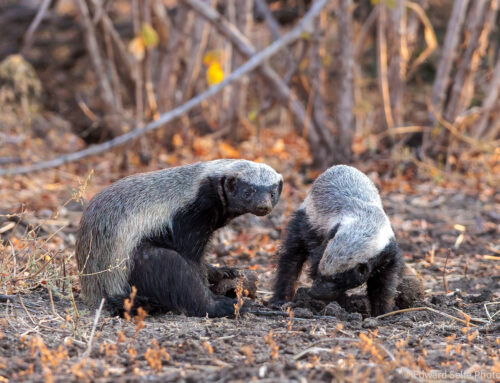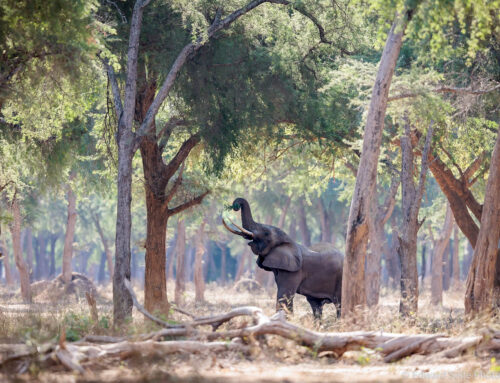The chance of a 2-week safari in the middle of September (a great time in South Luangwa) excited me from the time when we started planning the trip. More than a year later, the guests arrived at Kafunta River Lodge for the first part of a 15-night trip that would also take in time at the incredible Lion Camp and Nsefu Camp.
The guests arrived early in the camp which gave us time to chat, set up final changes to cameras and talk about the upcoming trip. Half were repeat visitors, having travelled with me previously and also to Mana Pools just before this trip and half were in Luangwa for the first time. I love having small groups – always 4 or fewer – so that I have ample time to get to know my guests and help them with whatever they need in terms of camera techniques.
Our first afternoon got off to a great start with a sighting of Ginger & Garlic just across the river crossing inside the park. They are two mature male lions who used to hold a territory in the central part of the park. In the middle of last year, they were ejected by 3 youngsters and they moved down south. I last saw them in October 2018 so it was a thrill to see them alive and well.
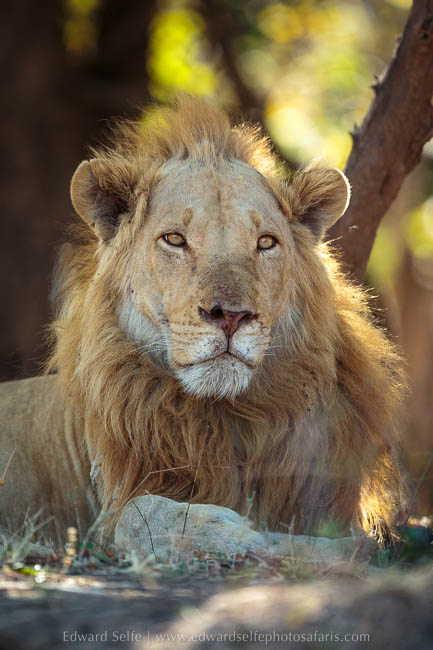
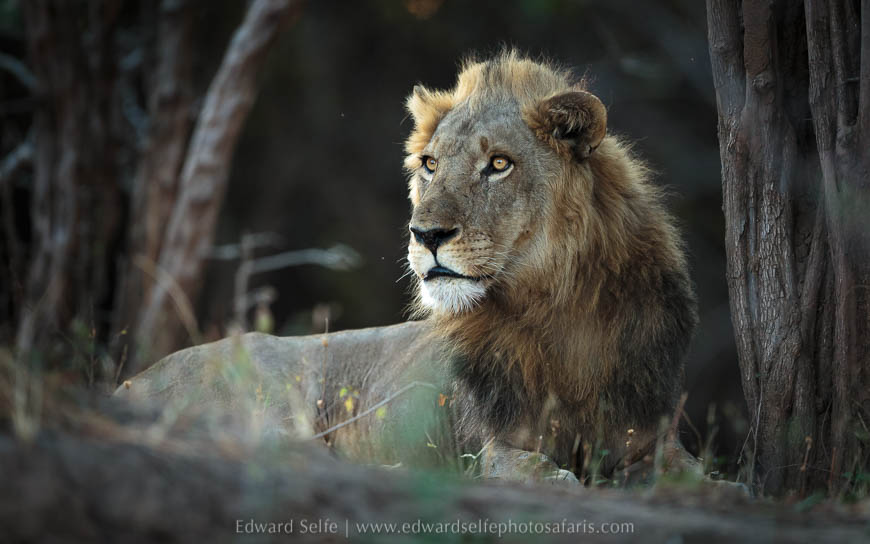
We had left camp early – since the guests had arrived early that day – so it was still hot at the time we found the lions. We moved on and spent time with an elephant and her calf who were resting in the shade. This was a great sighting for us since we could move slowly around them, practising compositions and refreshing camera techniques. Exposure compensation, focus and recompose, depth of field etc.
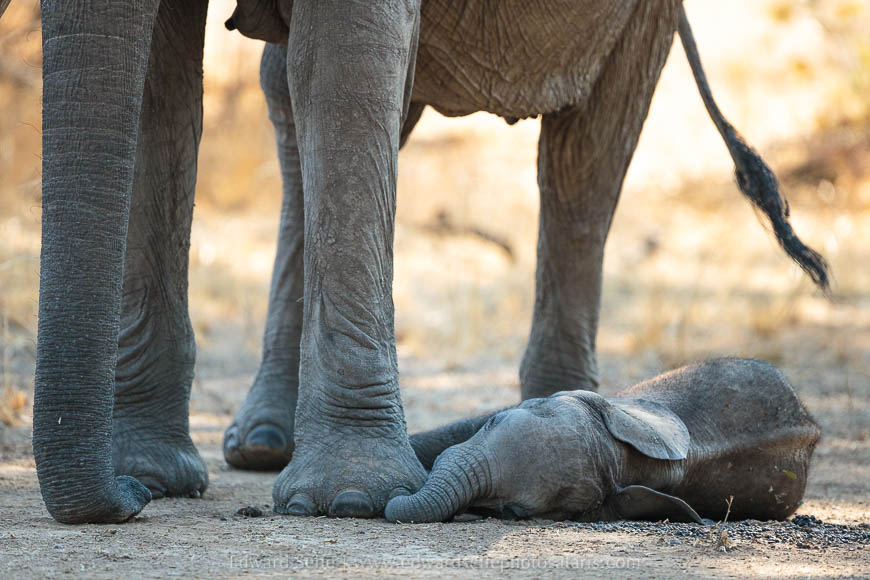
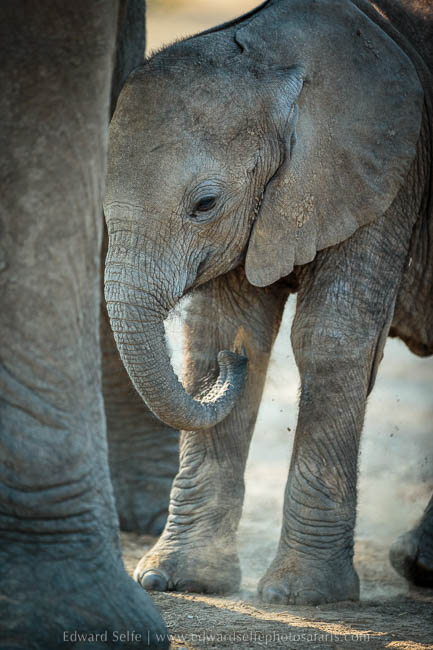
Later in the afternoon, we spotted a large owl in a shady tree and spent time working out how to minimise the bright highlights coming through from behind, and how to set the camera to meter off the owl rather than including the background. In time, a shaft of light came through and hit the bird which gave the best results.
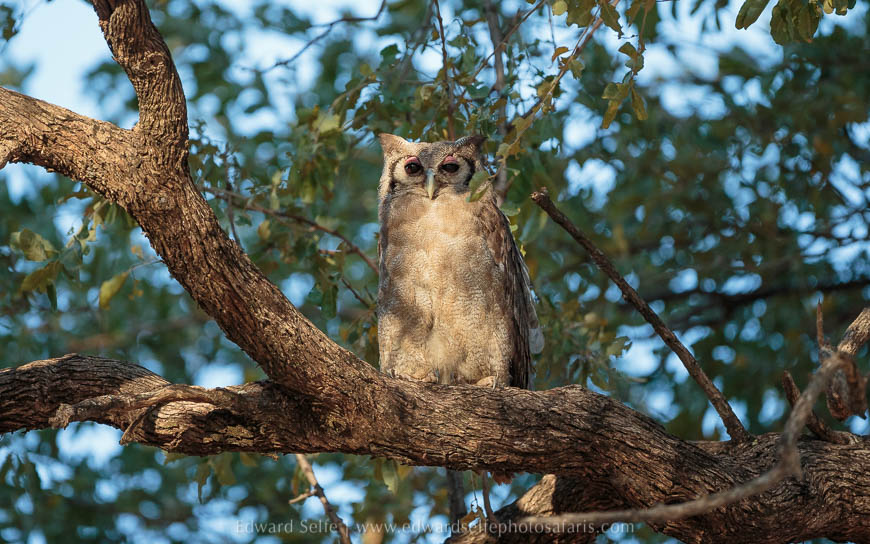
After an exciting first afternoon, we were keen to get out on our first morning drive the next day. Crossing the river and stopping on the other side yielded a nice sunrise but nothing in terms of animal calls or leads that would take us to the headline sightings. In fact, that day was quite quiet in the bush and despite my efforts to track down large game and predators, it wasn’t happening that day. We spent time where the light was nice, including a low-level photo with some zebras, superb light on an impala herd and scenic shots of the river. A lilac-breasted roller was the last item for the day. It’s tough to follow a great afternoon with a quiet day, but the lesson to take from it is that the bush doesn’t always give us the headline sightings; we simply have to keep looking, using all the skills we have, and trust that something will show up. It always does.
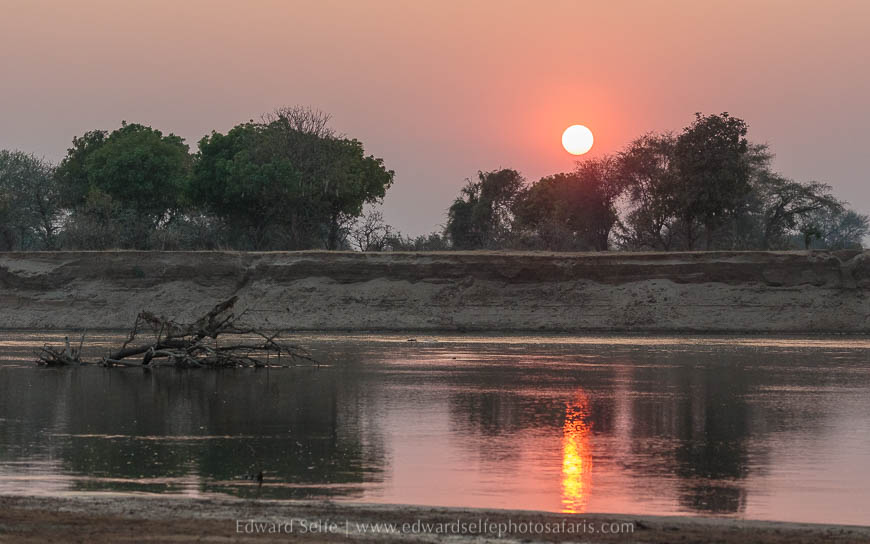
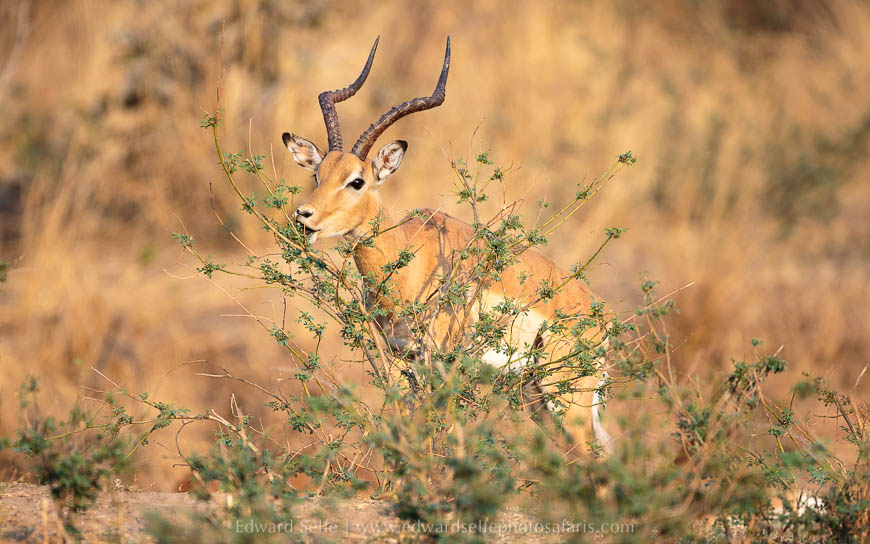
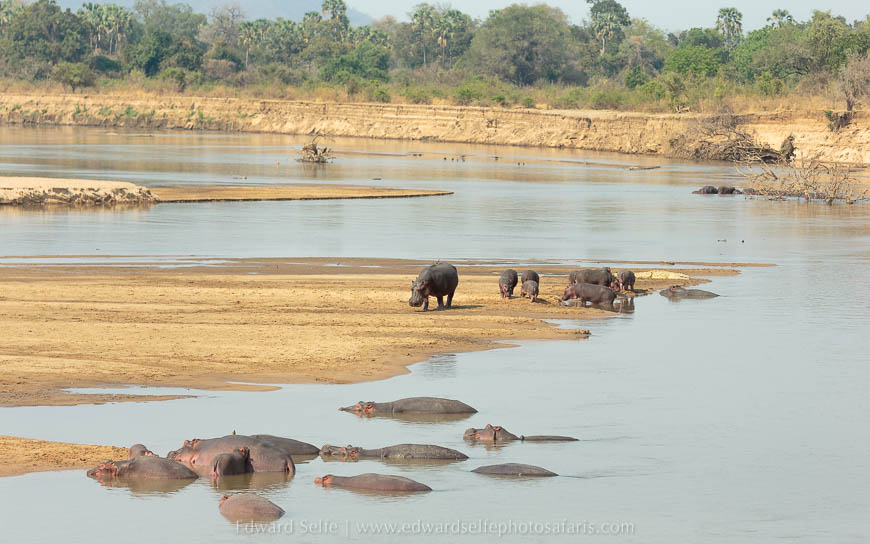
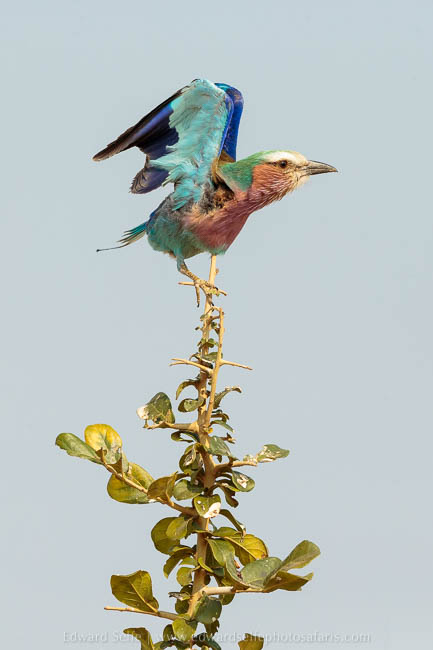
We didn’t have to wait long. The following morning, we checked into a grassland area and I spotted a leopard hidden deep in a sausage tree. She was on the move so soon came down and started patrolling though the grass. Eventually, she took refuge in a very thick tree and we weren’t able to get any good photo angles. But on the way back to camp, we tracked down another leopard in another sausage tree (see the pattern here?!) and were able to get much better photos.
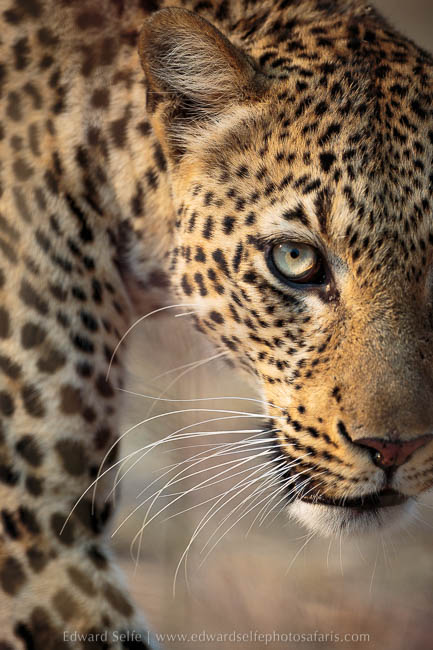
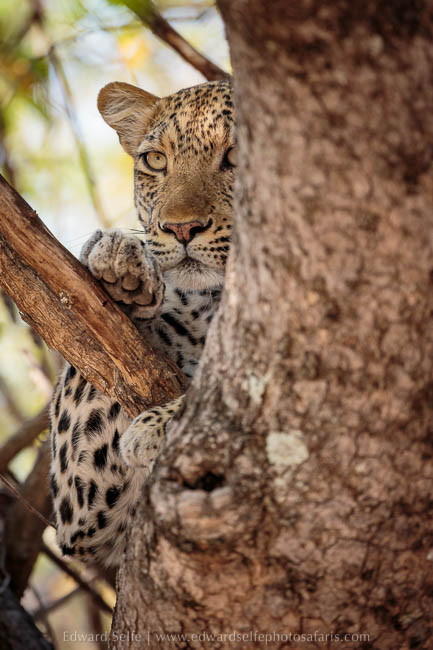
The afternoon was also a winner, with a lilac-breasted roller showing off its aerial hawking skills and a herd of elephants who came to drink at the water.
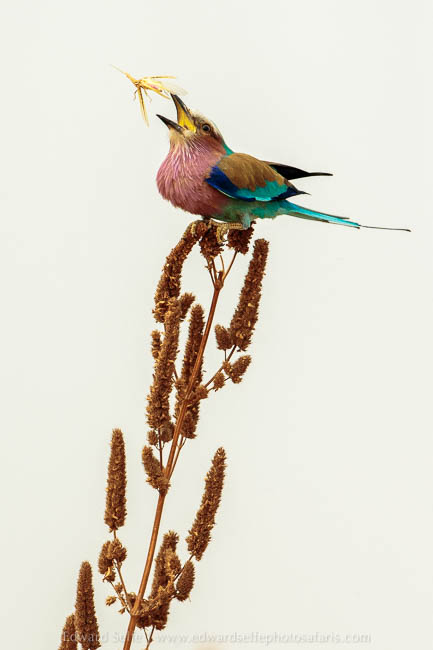
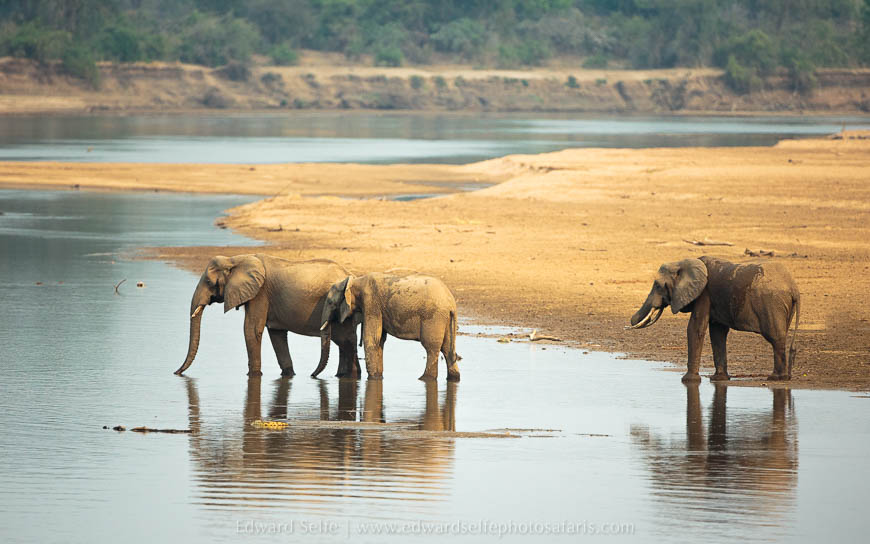
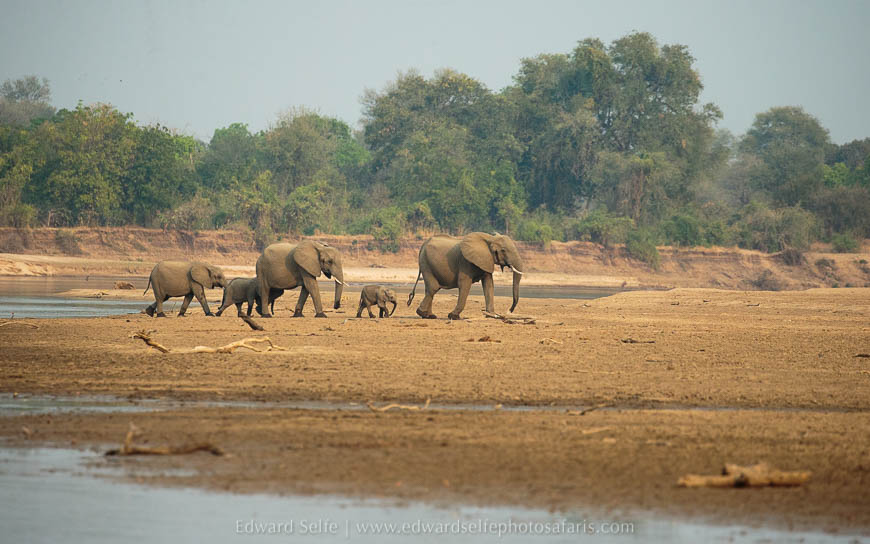
We decided to visit the incredible carmine bee-eater colony the following morning. But I wanted to wait for the light to improve, arriving at the colony at about 07.00, so we took a slow drive through prime habitats and I tracked down a leopard moving in a gully. She was on the hunt, so I took a chance and drove ahead of her to a beautiful tree and hoped that she would use it as a scouting point. I was pretty happy when she climbed up and surveyed the scene giving us superb photos.
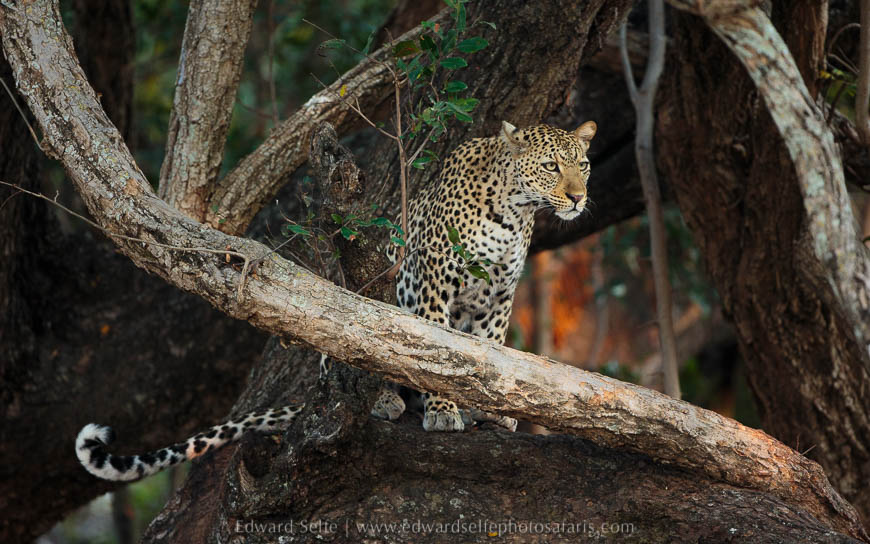
The leopard moved off, but we were happy to leave her to hunt. After all, we’d had a great sighting and we had an appointment with the bee-eaters. We’d talked the previous night about the best ways to take great photos of these fast-moving birds so the guests were briefed about angles, shutter speeds and the best times to catch the birds in flight. We had a great hour with the birds, waiting for them to erupt from the bank when a bird of prey passed overhead.
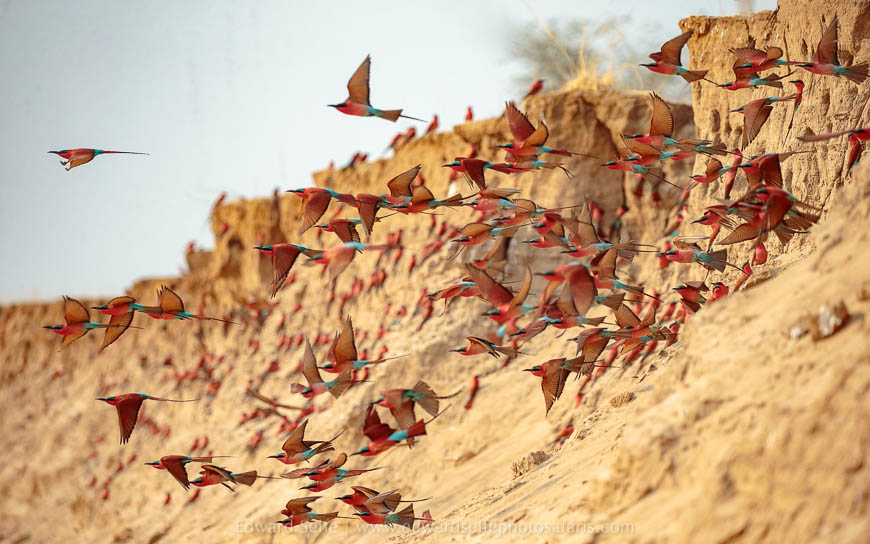
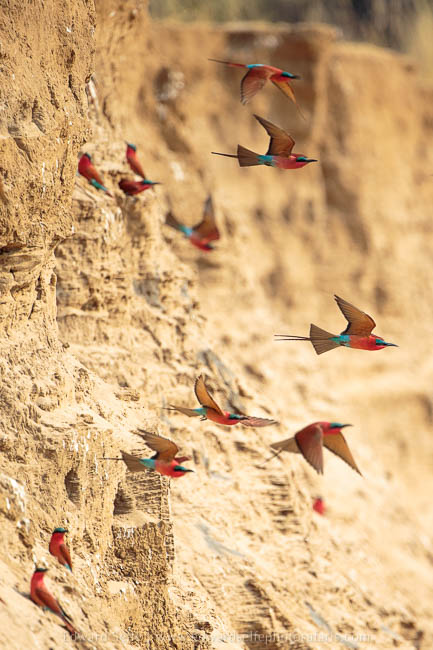
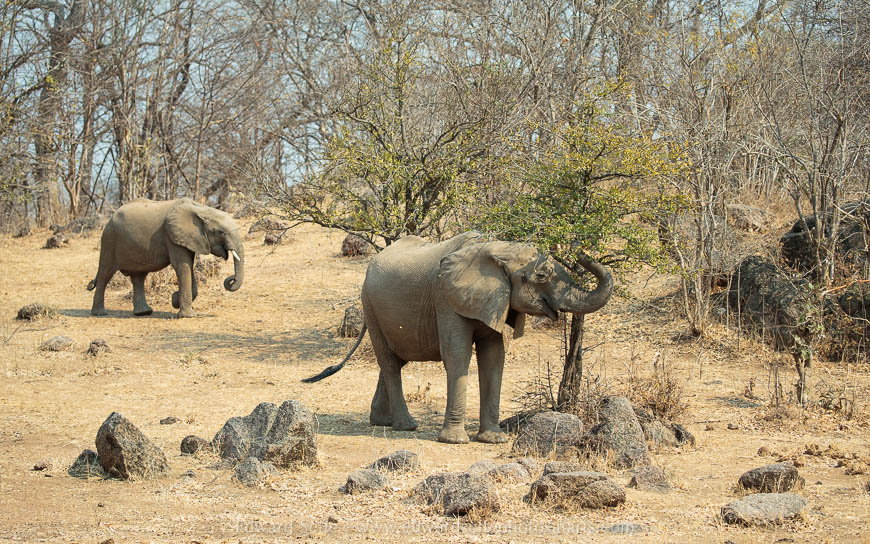
The afternoon and night brought us only a stunning scene in the palms area south of Kafunta and a brilliant chance to sidelight a leopard at night. We had talked about this technique and it as great to have the chance to try it out.
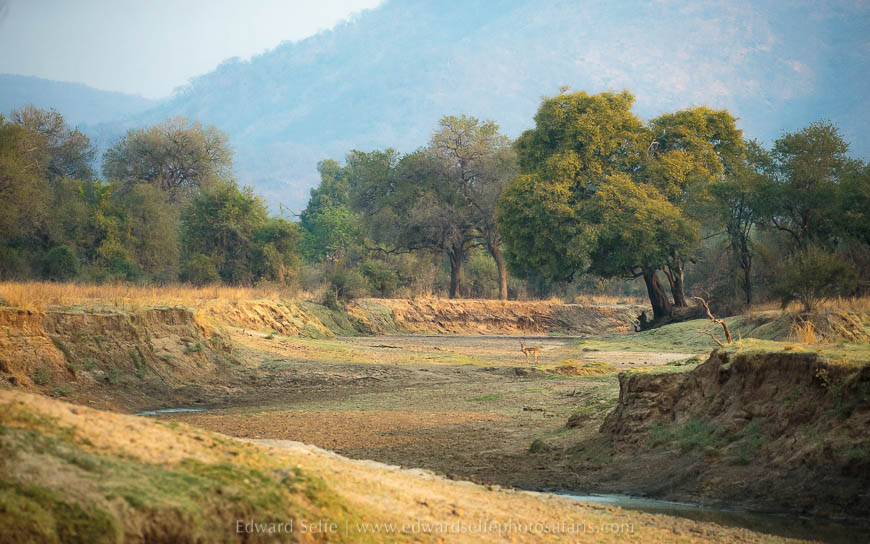

The following day was a quiet one; but for Luangwa that simply means that we didn’t track down any predators! We still enjoyed lots of game sightings and ended the day with the best porcupine sighting I have had in Luangwa. After spotting it some distance away, we approached slowly and it spent 25 minutes foraging around our vehicle! I have normally seen only the back end of these nocturnal creatures so this was a treat for us all!
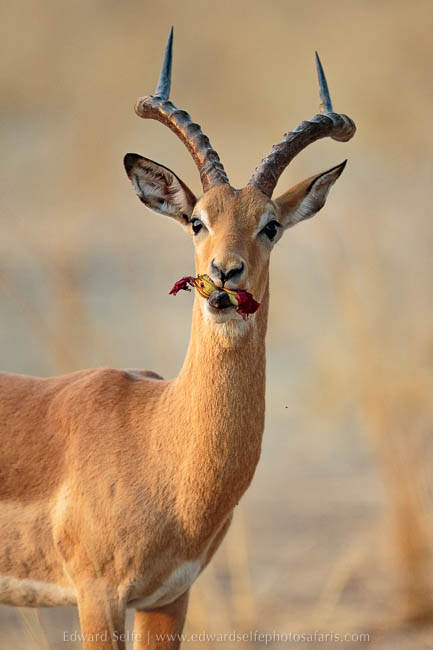
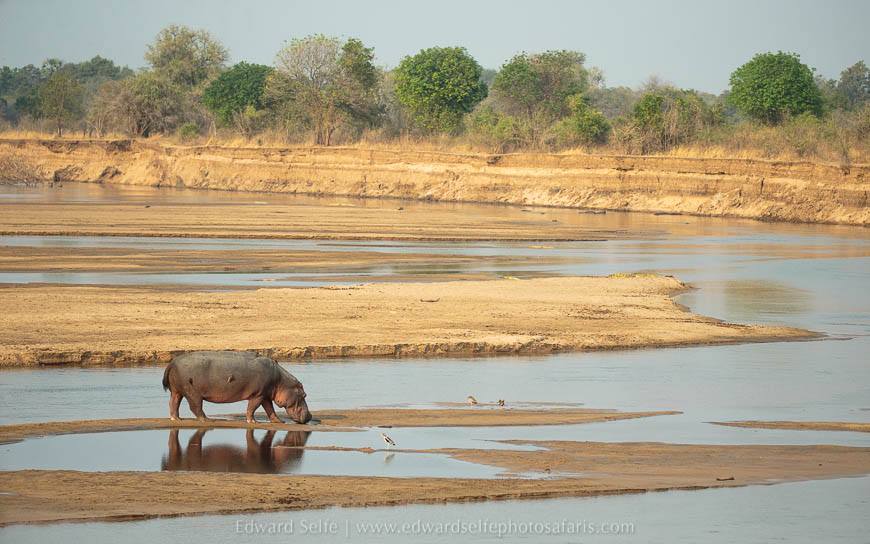
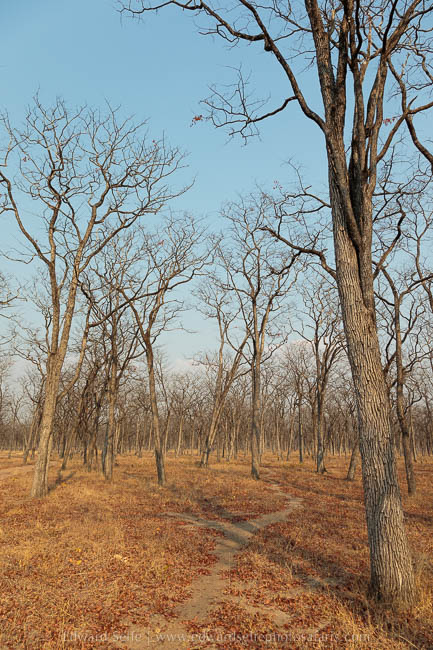
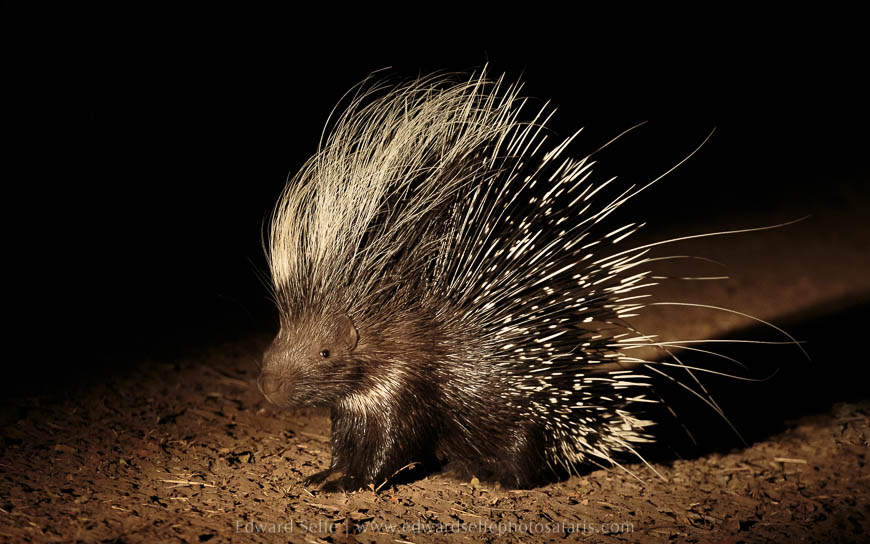
As always, we set our early the next day, planning to explore new areas. As usual, we didn’t get far! A huge herd of buffalo were moving towards the river and I predicted that they would drink at a favourite place. We drove ahead arriving just in time as the herd was very large and spent over an hour with the herd as they drank, splashed in the shallows and then moved on.
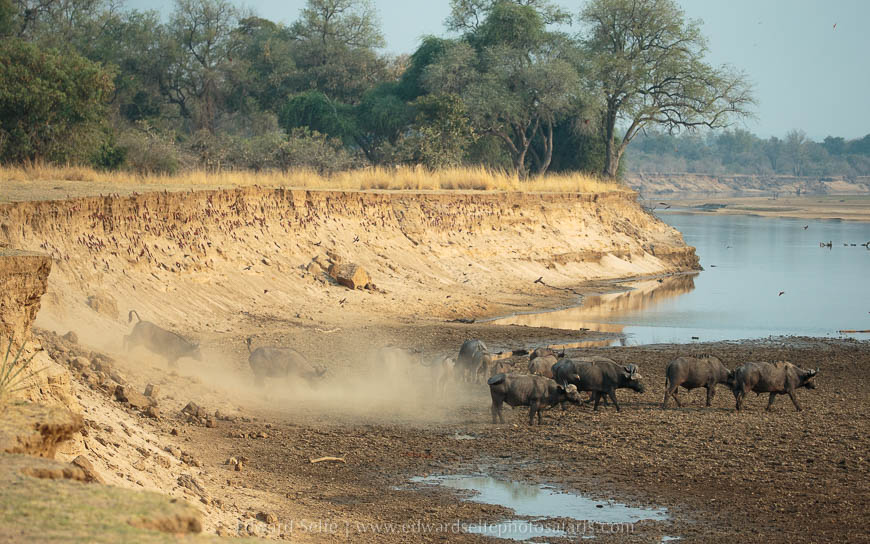


We then had a quick-fire trio of carnivores, with a small pride of lions feeding on a warthog, a leopard sleeping in a tree and a pack of wild dogs resting in the shade! It was late in the day for all sightings, but it gave us plenty to work with in the afternoon!
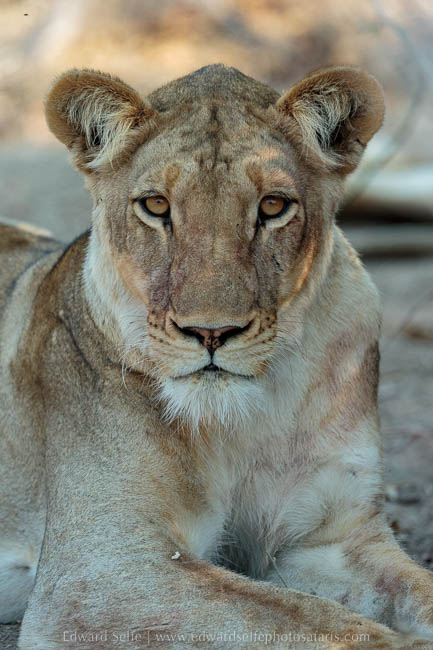
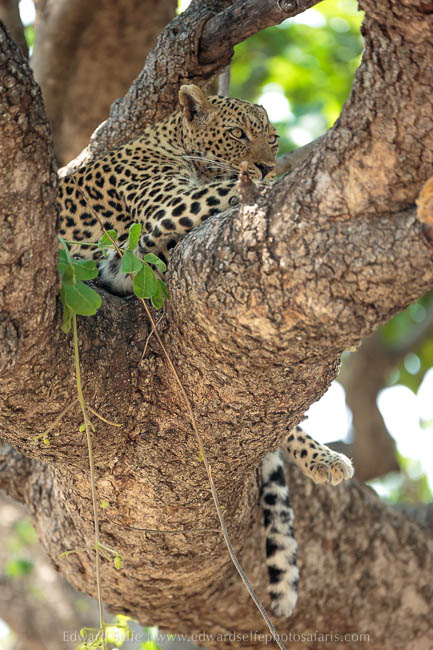
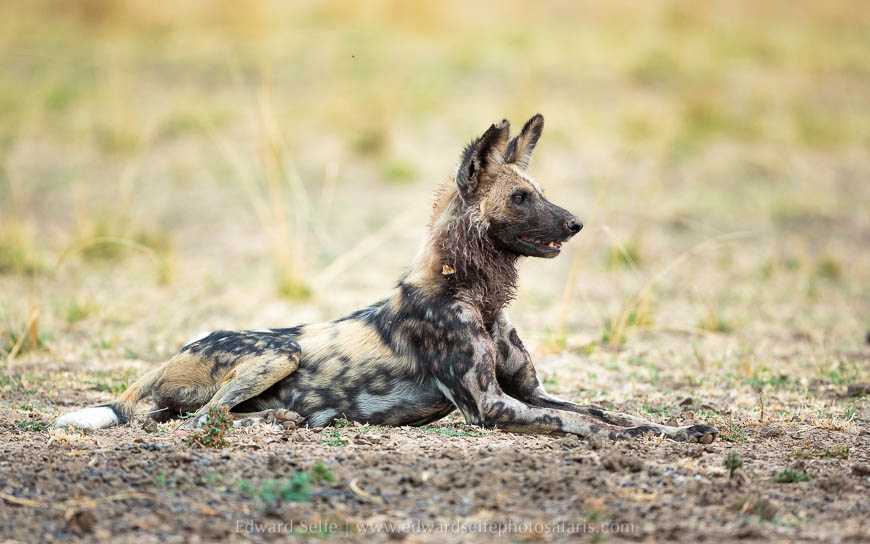
We opted to prioritise the wild dogs in the afternoon but sadly they were too full from their morning feed and, apart from chasing a few vultures, they were quite inactive. Knowing that they love the large plain where we had found them, I drove there early the next morning. On route, I stopped to listen and heard excited hyaenas feeding on something. Hoping that it was the dogs’ leftovers, I rushed out on to the plain and was slightly disappointed to find only hyaenas! However, one or two of the scavengers were wandering towards the river and I thought that the dogs might be down on the sand having a drink. A quick check showed the whole pack of 13 playing on the beach.
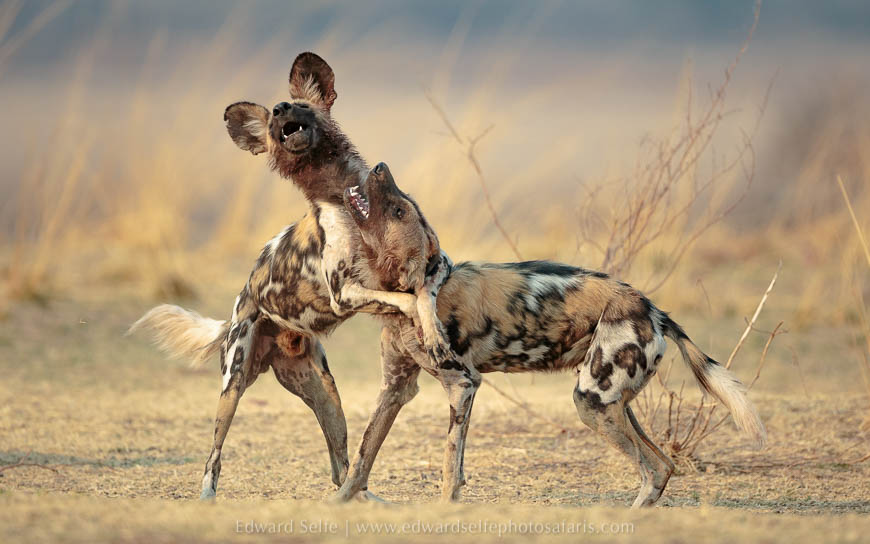
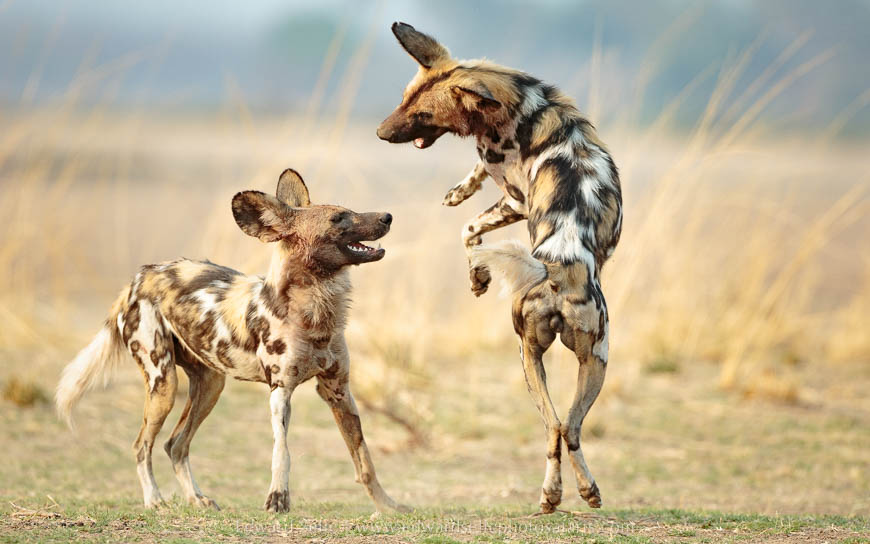

Throughout much of the dogs’ play session I had been listening to monkeys calling in the scrub nearby; once the dogs had started to settle, we went in search of the commotion. Very quickly a well-known leopard popped up and we watched as she spray marked, groomed herself and then started to hunt in a drainage channel. What a morning this had turned out to be!
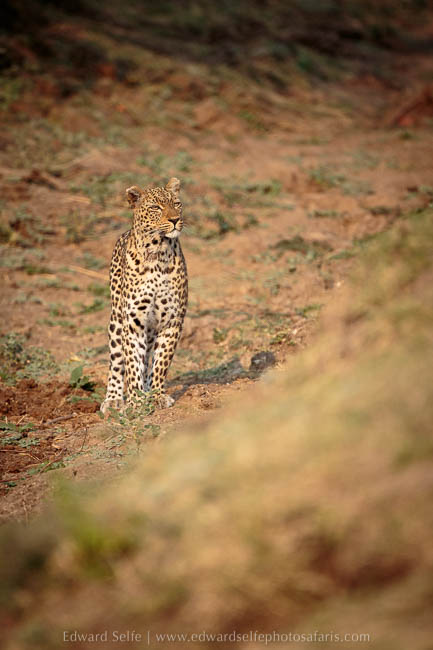
That day was our changeover to Lion Camp, so after packing up we took the 3 hour drive north through the park to the beautiful surroundings of this newly-renovated lodge. As well as being the most superb wildlife area, Lion Camp offers the most stylish and comfortable accommodation, beautiful lodge area and the best food around. It’s a joy to be there.
As always when arriving at a new camp, it takes the first safari drive to read into the sightings and learn where the sightings are happening. The guides at Lion Camp reported a dead buffalo near camp and a dead hippo in the river. It seemed we would have a smelly afternoon but we hoped to find some lions and crocs sharing the windfalls. The buffalo was attended only by vultures but the hippo was surrounded by huge crocodiles and the feeding frenzy was incredible.
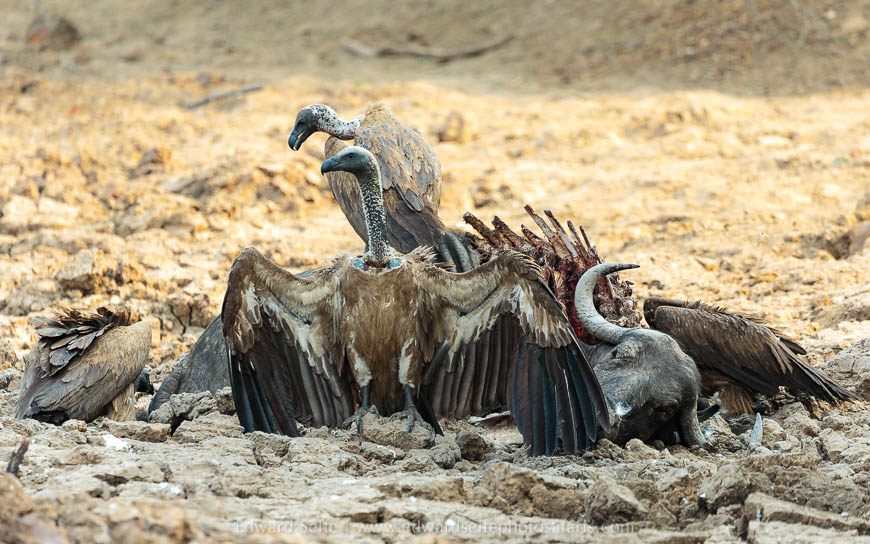
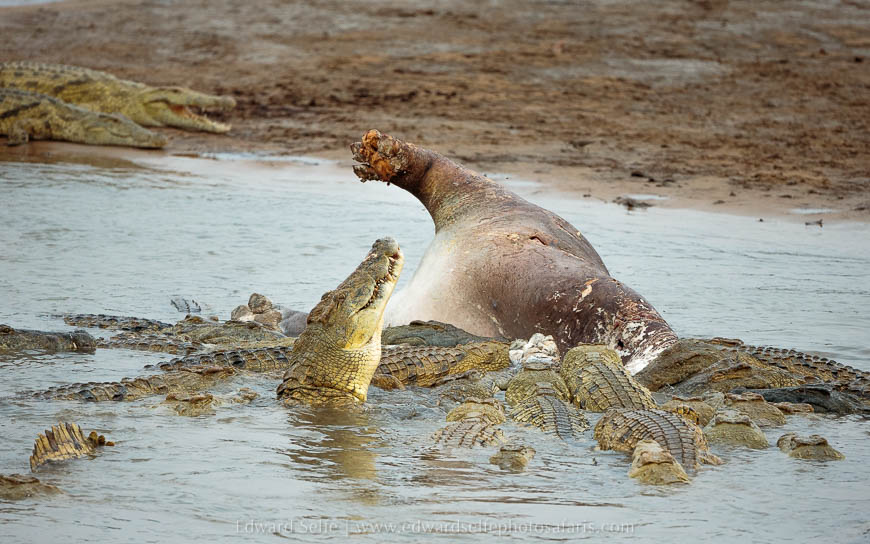
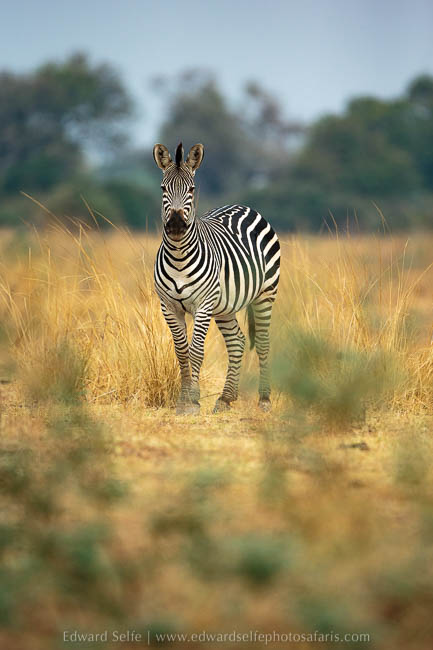
Lion Camp is famous, of course, for its fantastic lion sightings. By day 3 we were really hoping that some of the Hollywood Pride, the MK Pride or the Kapanda Pride would show themselves. We searched for them but there were no calls to be heard in the cold air of early morning. After a quiet hour with not much to show for it, distant dust led us to a herd of buffalo at the water’s edge. We had just missed watching them drink but their heavy hooves were kicking up dust and generating great atmospheric shots, particularly when backlit. The key to these shots is getting a good “flow” of animals through the shot and blocking out the sun so that it doesn’t flare in the lens.

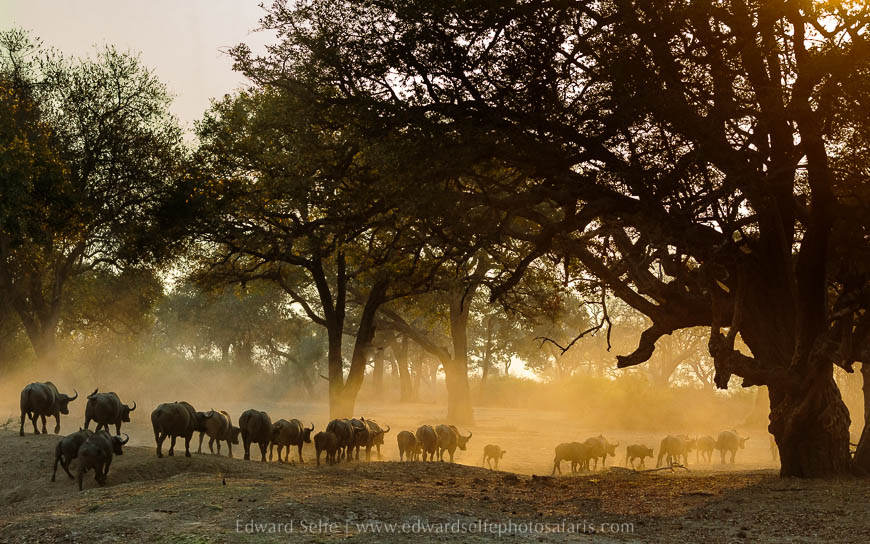
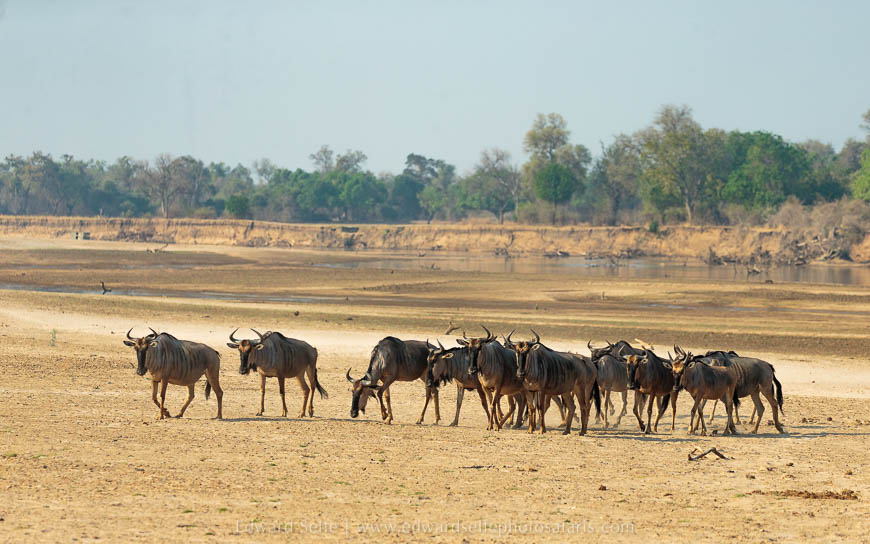
Late in the morning, we came across a hyaena at the base of a tree and wondered if there might be more to the story. Indeed there was because they was a leopard on the other side of the tree, resting in the shade. As leopard sightings go, there was not much going on at the time, but I could immediately that there was real promise in the situation. Surely she must have a carcass up the large tree, else why would she hang around with a hyaena so close? Scouting around revealed a puku antelope hidden in a thickly-leaved area of the large fig tree. There was not much to see at the time, but I headed back to camp, keen to share my plans for the afternoon with my guests over breakfast.
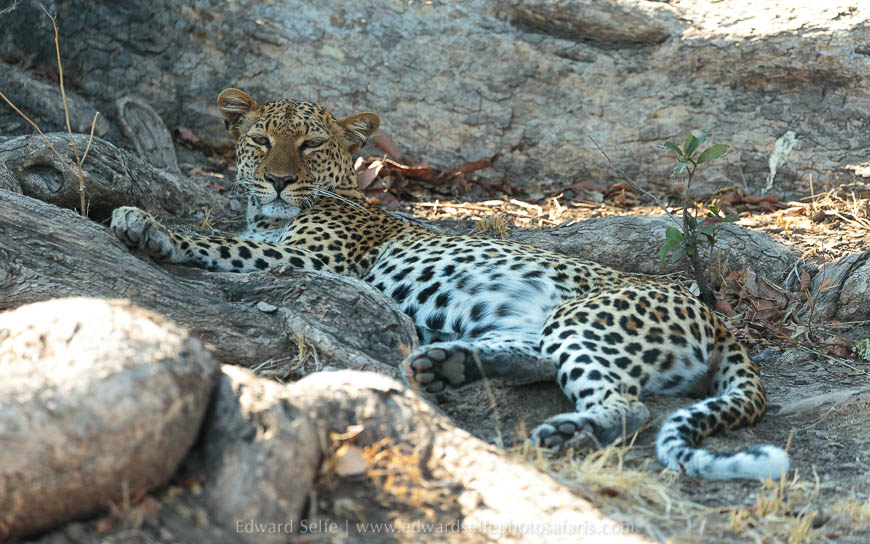
I could see that the carcass was nearly finished so she would not feed for much longer. I could also see that there was only one way in which she could come down the side of this very picturesque tree. So we went early in the afternoon with the plan to scout for the best spot to take wide shots of the whole tree with the leopard coming down the side. Of course, there were a lot of factors that needed to come right for this to work out, but I had some confidence! On arriving there, the carcass was still hidden but she was feeding. A good start!
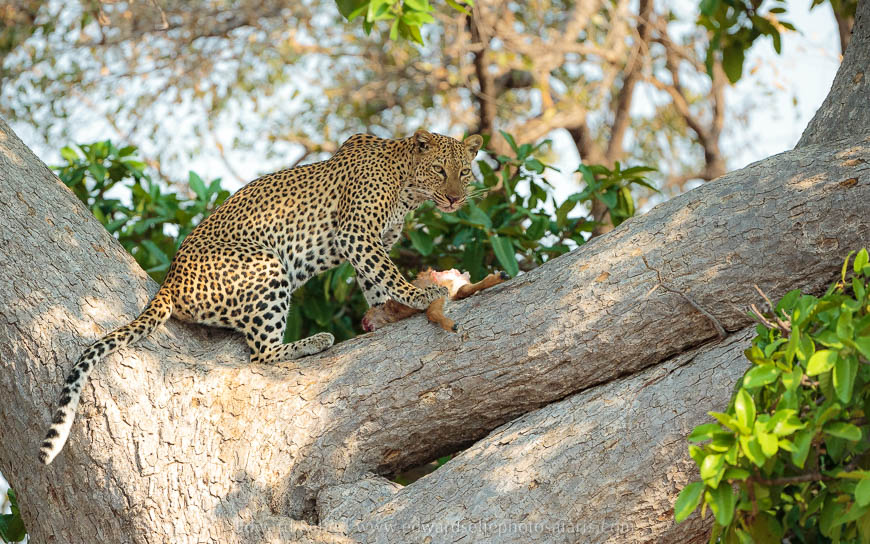
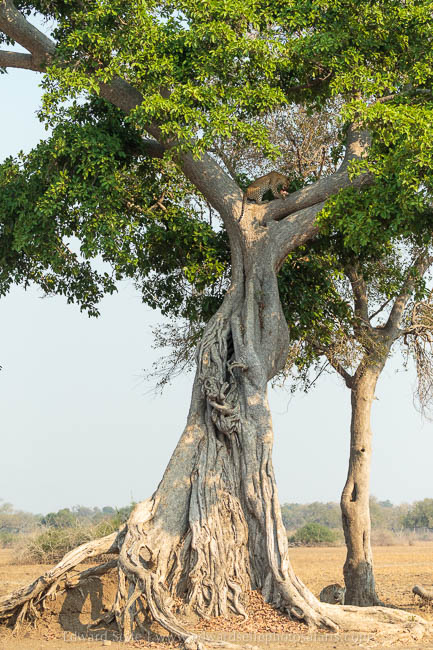
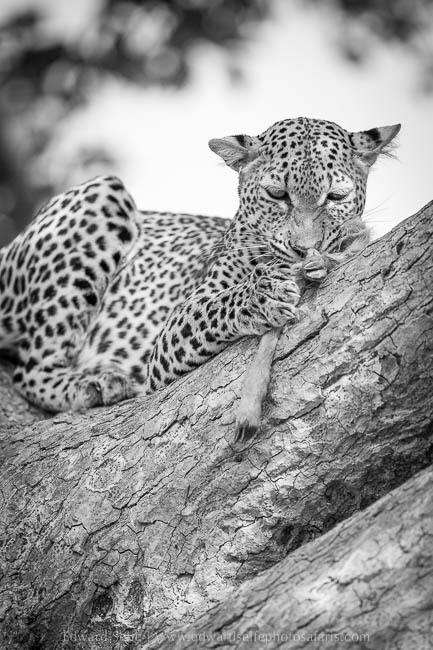

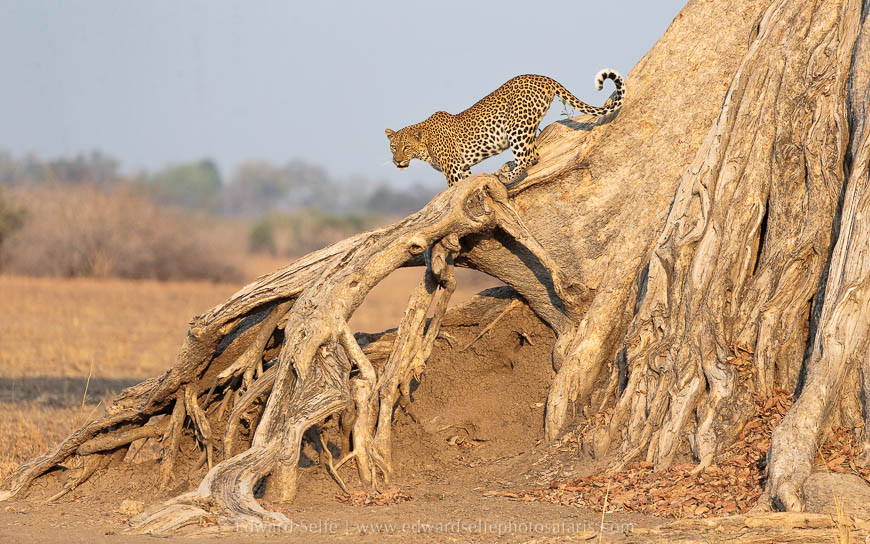
Everything after this was simply a bonus! But, benevolent performer that she is, she wandered towards us, swishing her tail against the flies and then lay in the evening sunlight under a dead tree….
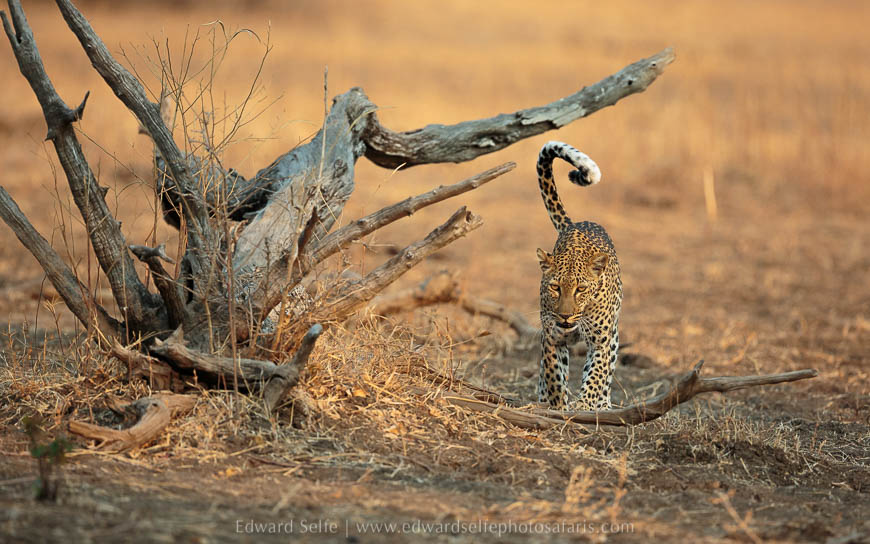
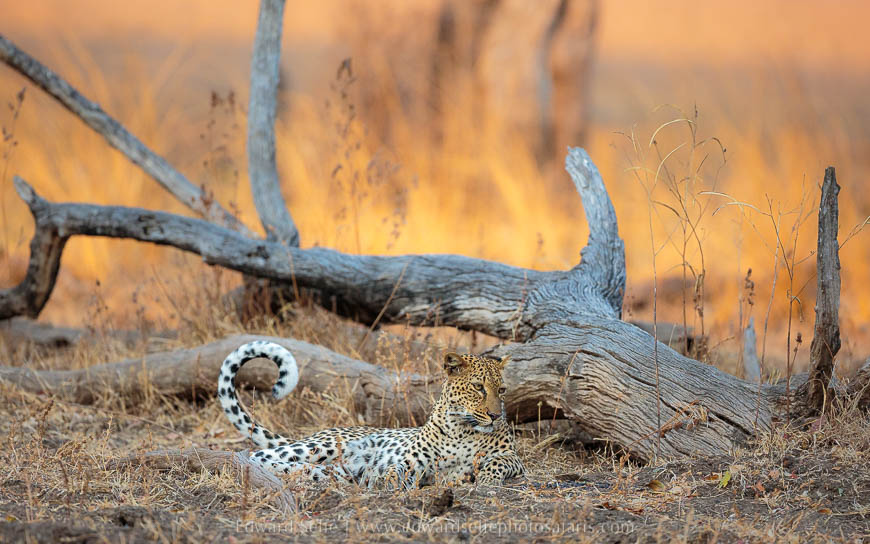
Pretty confident that we would not top this, we left her in peace and made no attempt to find her again after sunset; after such an encounter, it seems unnecessary to follow her with a spotlight and interfere with her evening.
With this leopard sighting, which perhaps tops the list of most rewarding of the year…?, it was lions on the agenda the next morning. But Nature doesn’t work like that, and despite lots of tracks seen on various roads just south of Lion Camp, the lions stayed hidden that morning. The joy of Luangwa though is that there is always something going on along the river, so we moved between various viewpoints and enjoyed time with elephants both in the morning and in the afternoon.
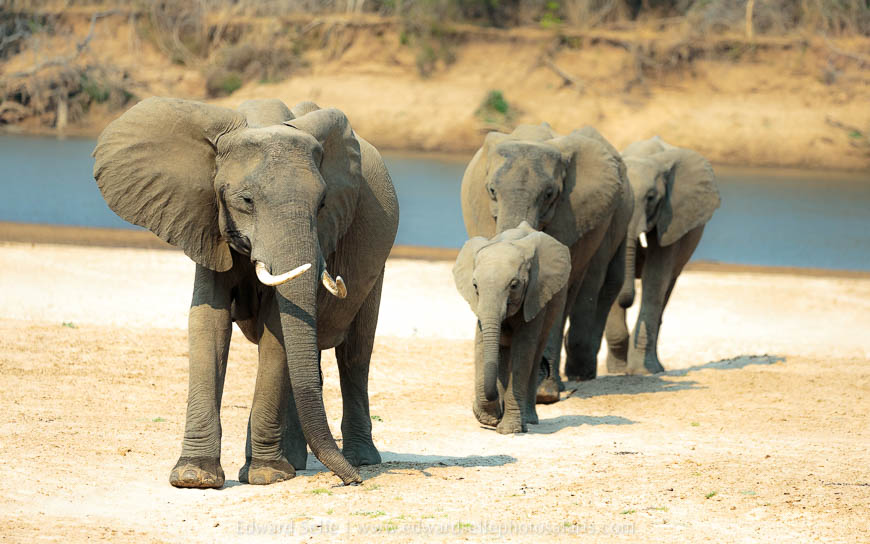
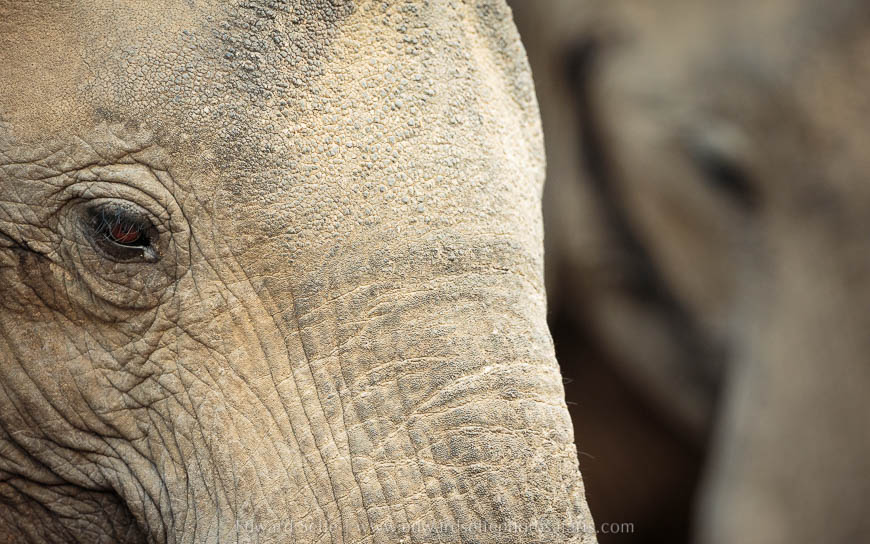
Late in the afternoon, a massing of vultures in an area near Fish Eagle lagoon led us to the MK pride on a relatively fresh buffalo kill! Finally, after 3 days at Lion Camp, the lions had made a dramatic entrance! We spent the rest of the afternoon and some of the night with the pride, who later revealed that their two small cubs had now joined the pride full time! We also returned early the next morning and used the very soft early light to shoot through the tangle of branches and get photos of the lions feeding on the rest of the carcass.
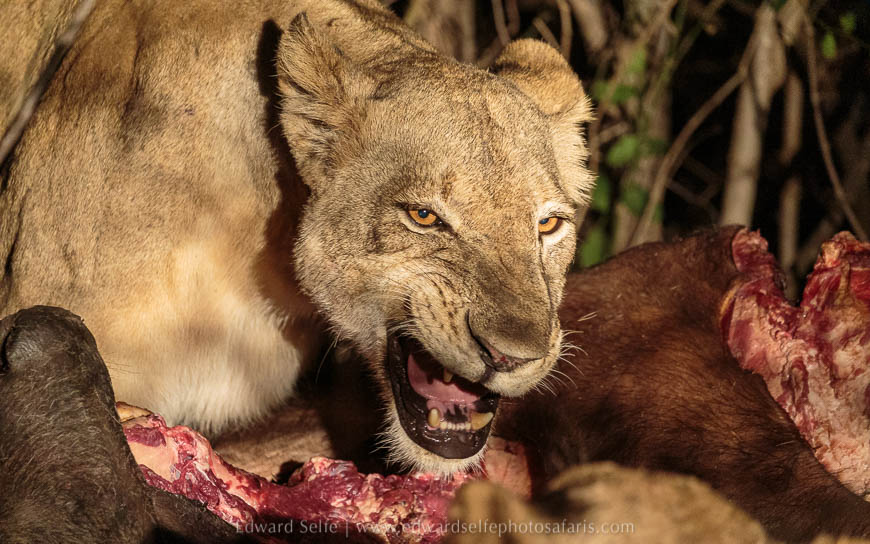
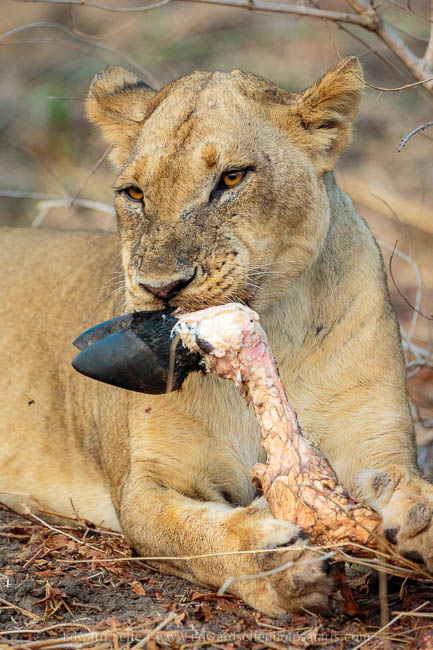
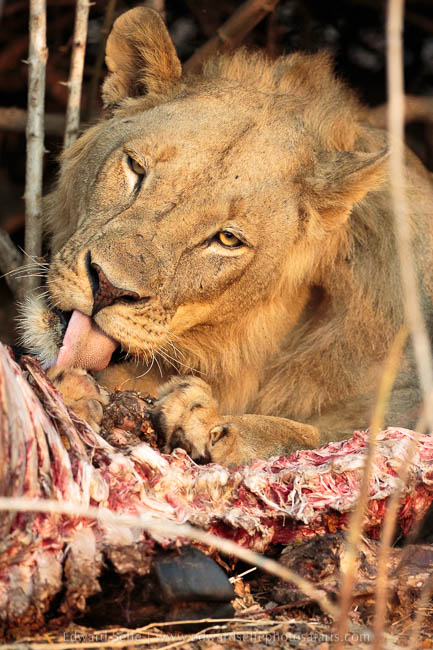
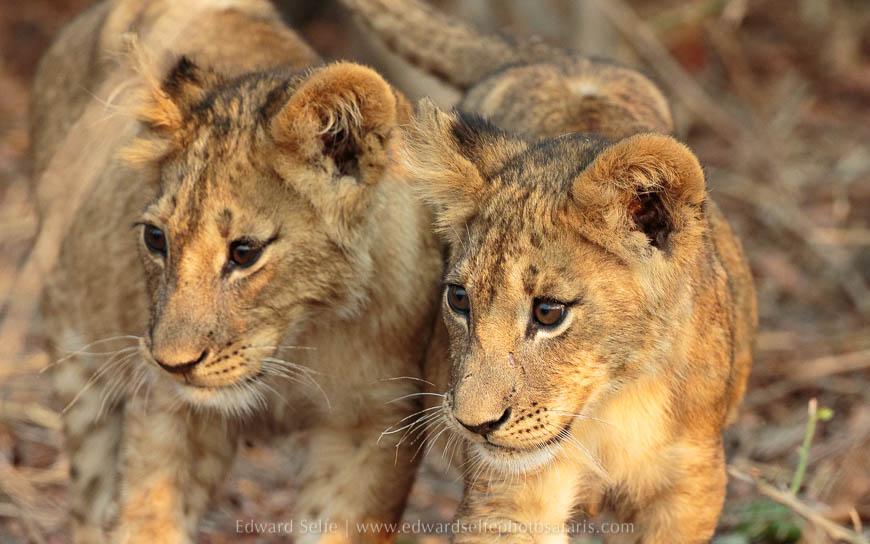

We had made a plan to visit an inland lagoon that morning so, after the light began to get bright, we headed to Ndawa lagoon in search of wildebeest, eland and – just possibly – roan antelope. It is quite a long drive but it takes us through the Mopane forest that forms much of the valley floor and then out into the grass plains further inland. It is great habitat for grazers such as roan, hartebeest, reedbuck and there is still forage on the shrubs for eland. We arrived at the lagoon and waited for about 2 hours with no luck apart from endless impala and warthog vistors. I decided to search further north and eventually when I was about head back to camp, a shape appeared from the thickets. This turned into two, then 5 and eventually 53 roan antelope in a huge caravan like camels crossing the grassland!! Such was their thirst — so late in the morning — that they barely looked at us before crossing the road and heading to the lagoon! It was worth waiting for as these are a rarely sighted and very beautiful antelope.
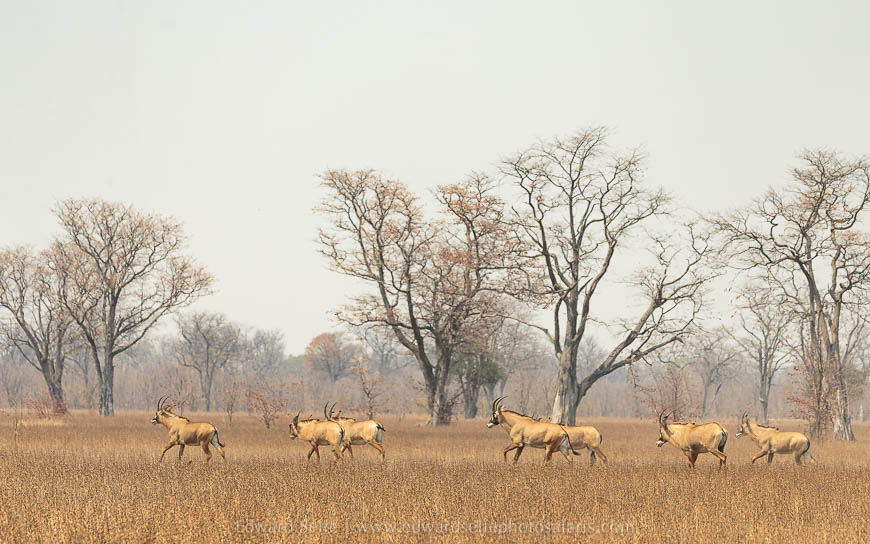
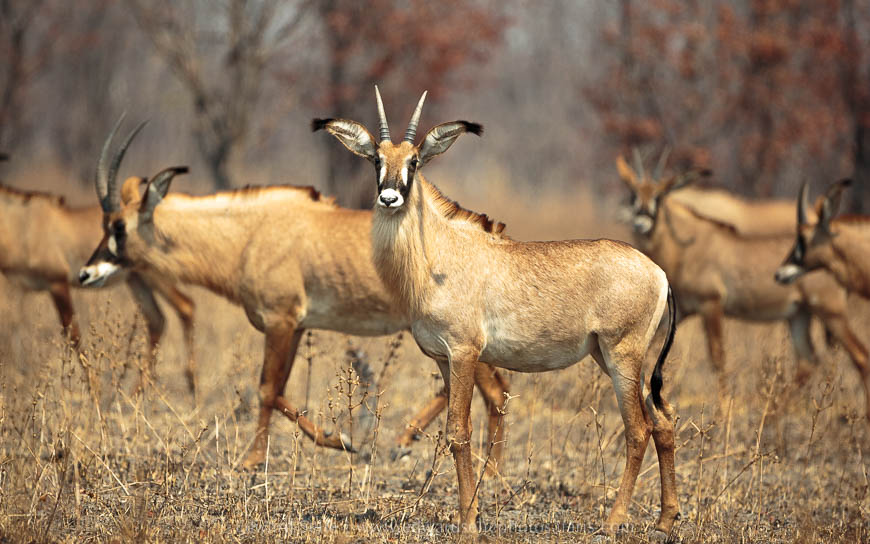
We hoped to finish off the lion story that afternoon, ideally with the cubs playing on the beach when they came for water. But we had clearly used up that day’s luck with the roan, as the lions lay flat until long after the light had gone. We had a large consolation prize in the form of Chipadzuwa who woke just before the light faded and gave us the classic leopard-in-tree pose that is so evocative of the Luangwa.
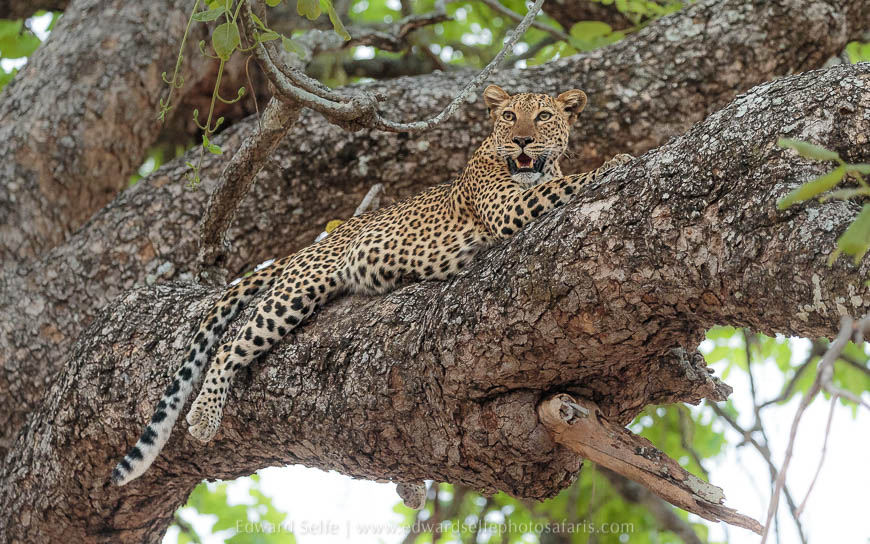
The following morning was our last at Lion Camp, so sought out the Hollywood pride — usually so visible around the camp — without any luck but came across a huge zebra convention that kept us busy for some time! The MK pride males were found down on the beach but they did little except stare across the river at approaching antelopes!
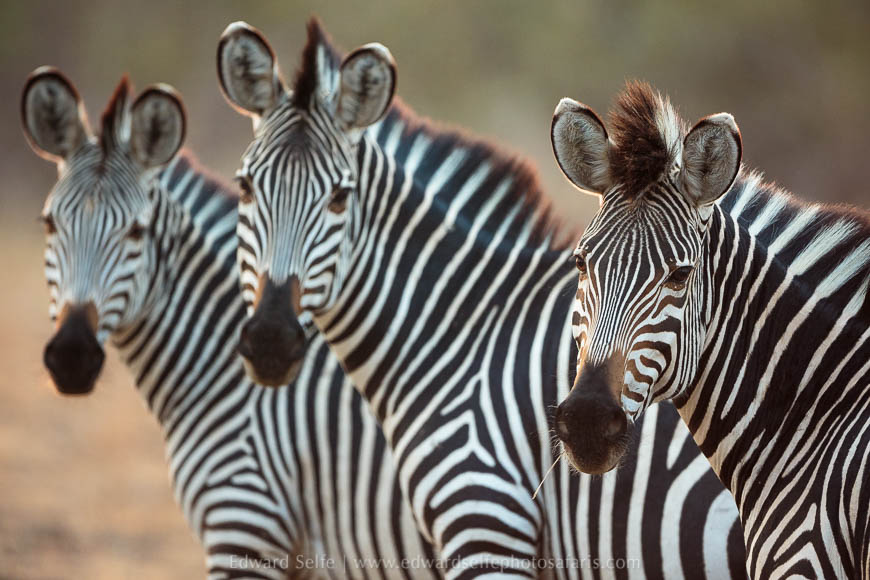
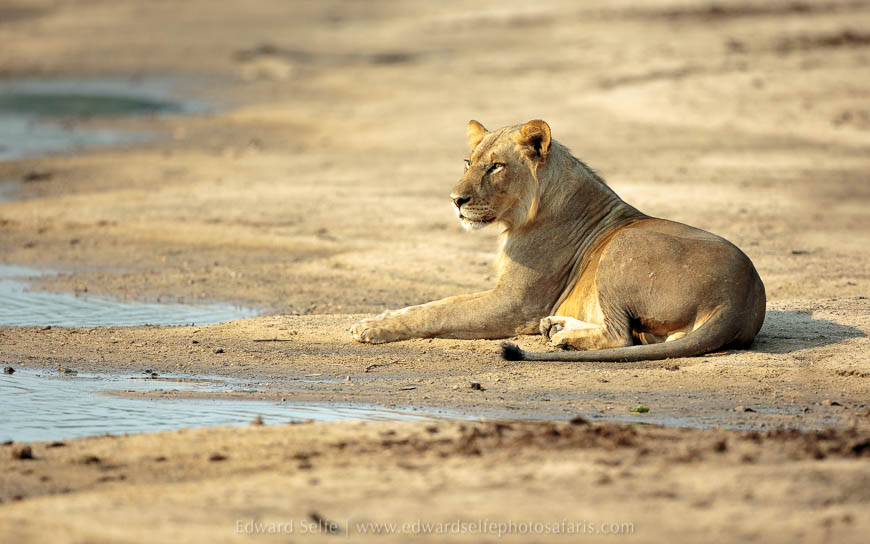
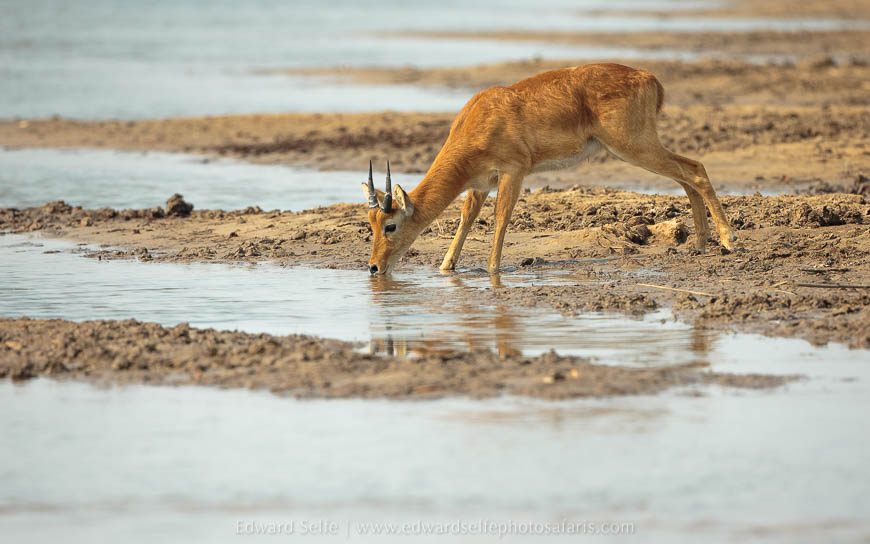
At lunchtime, we left Lion Camp, crossed the river and moved into the Nsefu Sector. This is still the most exceptional area in the Luangwa in my opinion, blending the best sightings with a privacy that is special not only for Luangwa, but for anywhere on the continent. Out first afternoon outing took us along the river, through excellent habitats for birds, leopards and hippos, and eventually out onto the plains behind the Croc River at sunset. We found elephants crossing the plains in the last light of day, including a stunning little calf.
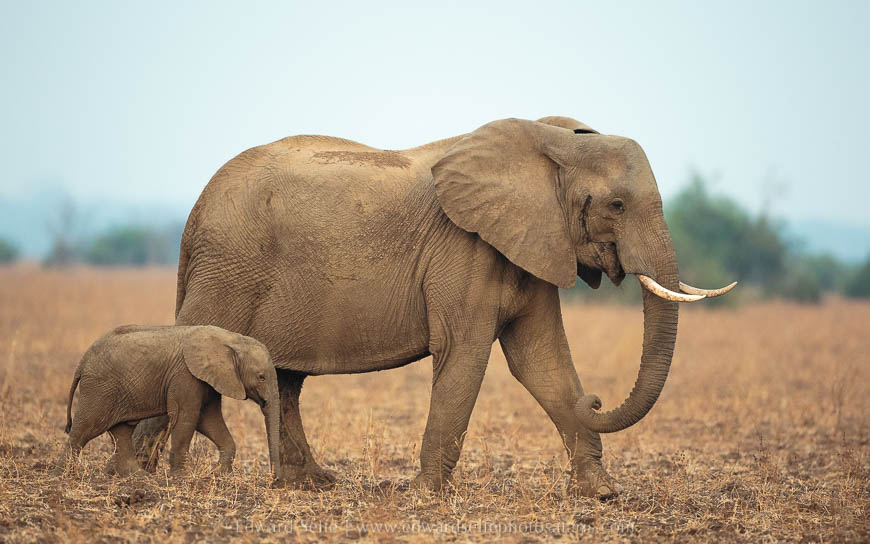
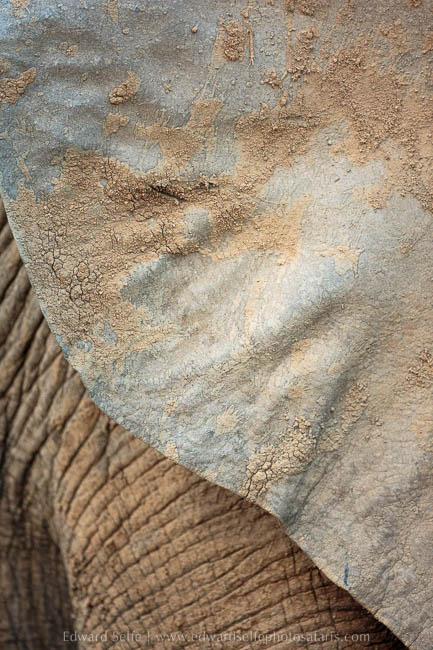
Our return drive in the dark produced perhaps my best white-tailed mongoose sighting and a large male leopard who drank from the Croc River.
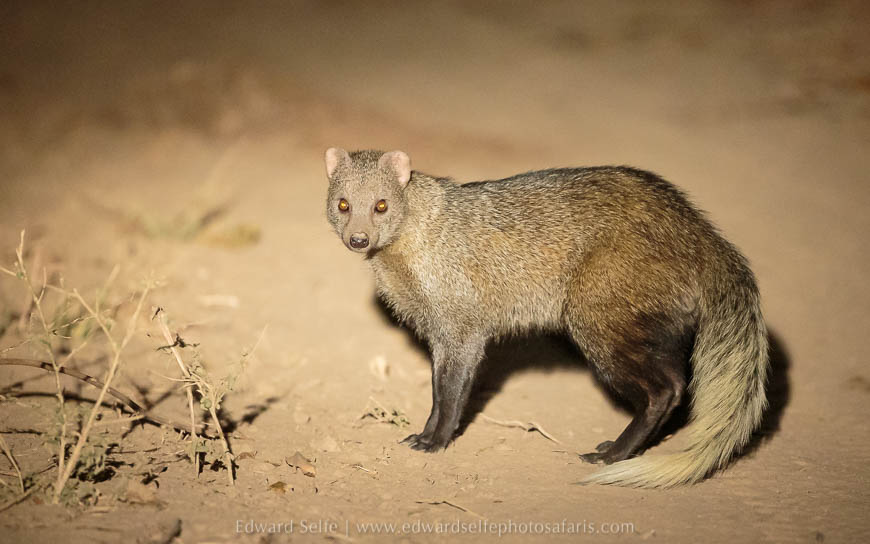
I went looking in the well-known Wafwa area the next morning, hoping to find the male leopard that we had seen the night before. Outraged calls from baboons told me that they were onto a leopard, but I wasn’t sure which one. On arrival at the area — the only vehicle there throughout — we found Chimwera, a young female, being pursued by baboons across the grassland. She was not concerned and simply hissed at them when they came too close. While they charged around, screaming and escorted her off the area, she spray-marked and largely ignored them! We chose a few select spots to take photos, using the low lying areas to get eye-to-eye with her and then left her high in the branches of a tall tree.
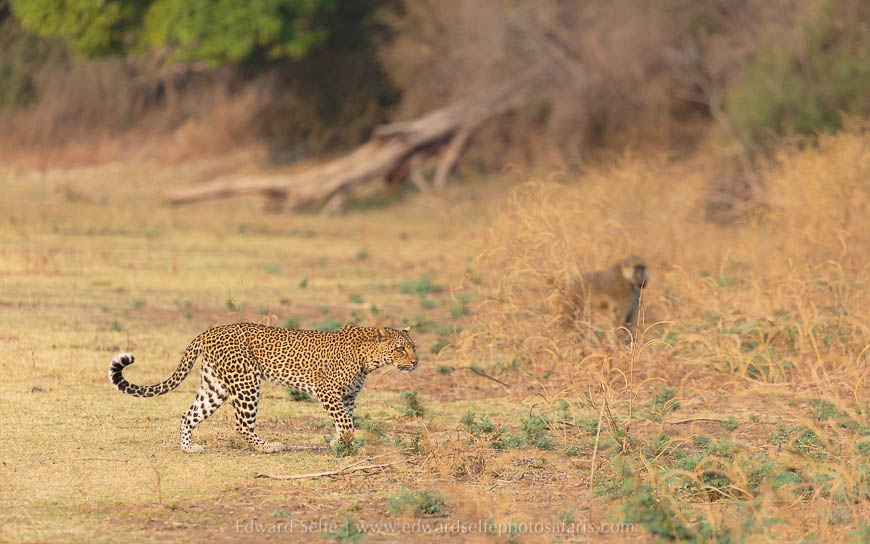
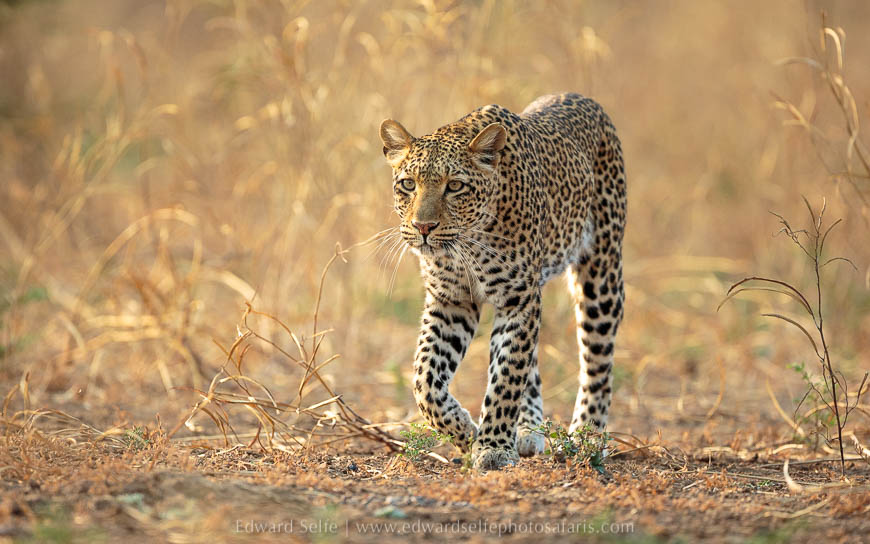
Late in the morning we found the Nsefu Pride resting under a thicket. Regularly they would all lift their heads at an unknown stimulus and then return to sleep. I guessed that they were hearing calls from the rest of the pride who were absent. We went looking for them in the afternoon, finding them when the light was at its very best. On they way, we spent time with a herd of elephants that bunched tightly under a shady tree, and then mud-wallowed before heading into the grassland to feed at night.
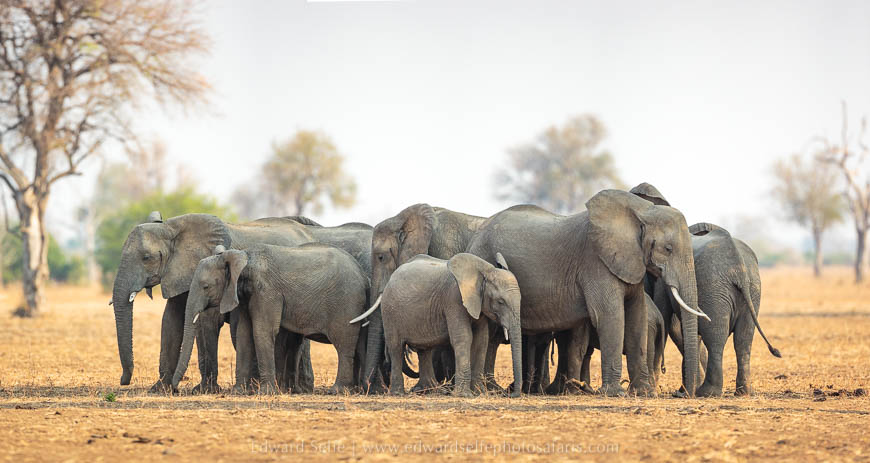
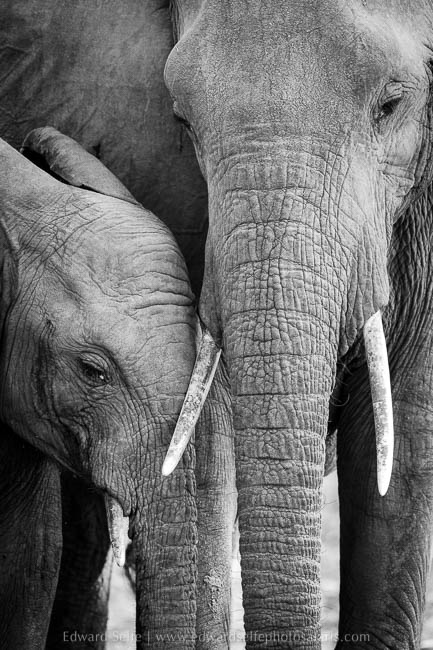
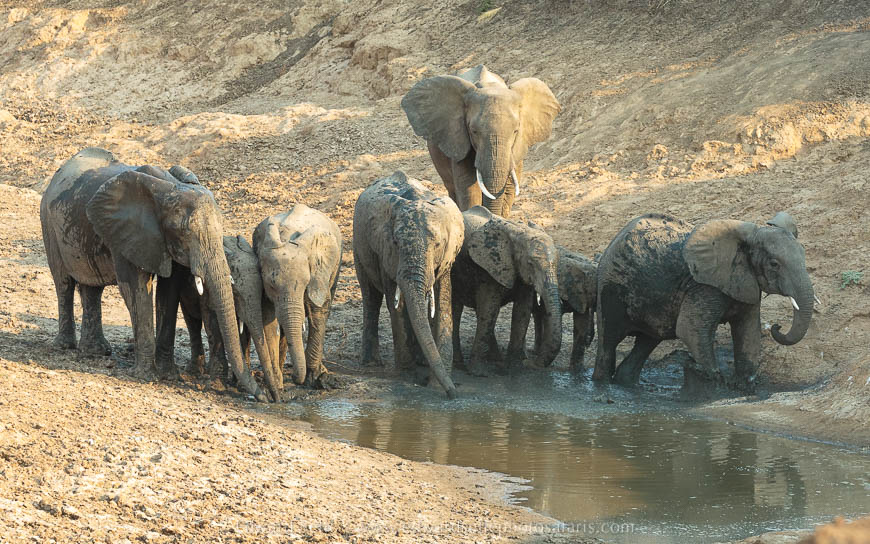
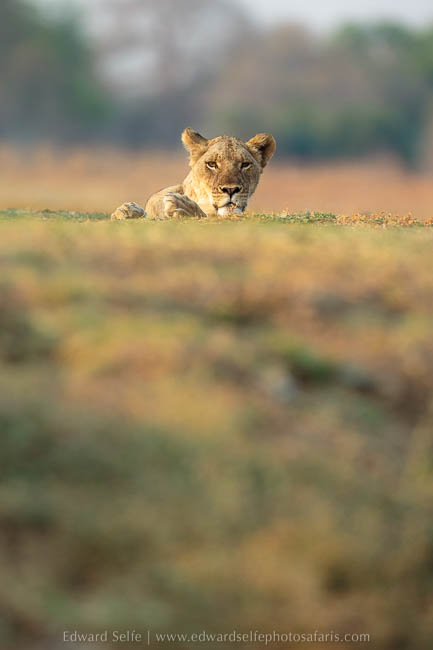
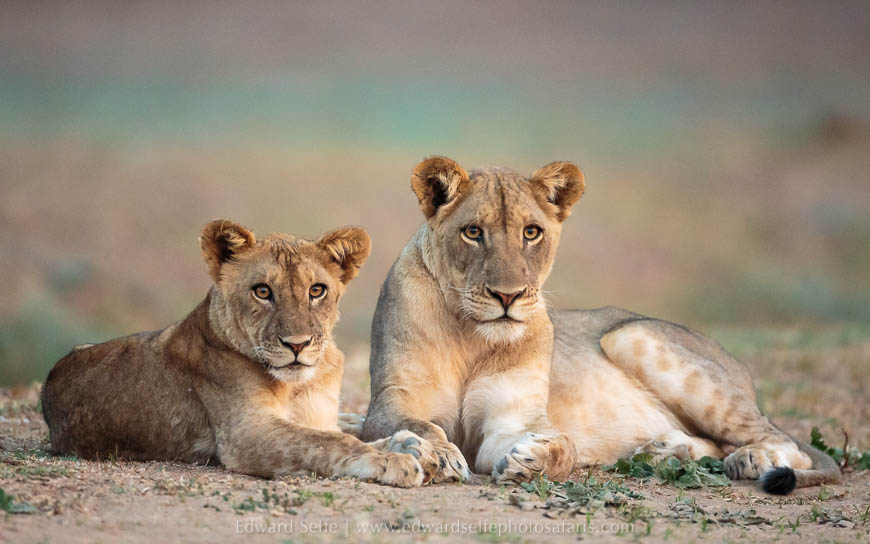
Lion calls in the early morning while we had breakfast (at 05.00 to allow us to leave at 05.15) led me to a young male with lots of hyaenas around the area. There was no sign of his kill, or why the hyaenas were there in force, so we moved on. Soon after, we found 3 wild dogs and I think perhaps the male had stolen their kill while the hyaenas watched. The dogs didn’t go far before settling down to rest but we had a few good chances with them.
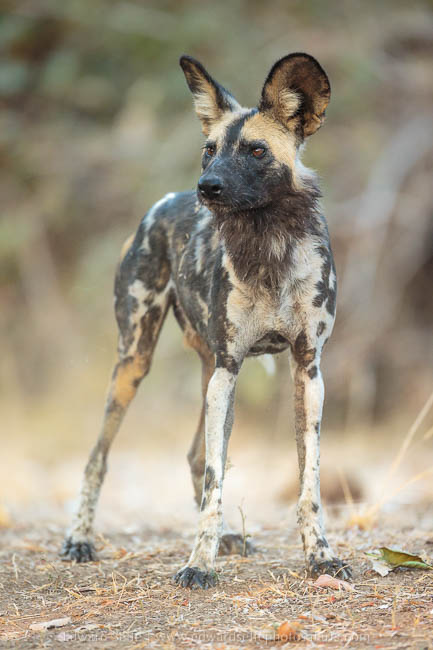
After a lovely elephant sighting, with more than 70 of them all around us, we returned to check on the lions and found a scene of total devastation; in the night, the 13 lions had killed 5 young buffalos and a young elephant! There were replete lions lying around in various pools of shade, while vultures cleared up the carcasses that the lions had abandoned. The commotion had even attracted two male lions from across the river, who had taken one of the carcasses for themselves and were guarding it under a thicket. We spent much of the morning and the afternoon there, watching as the lions took turns to rest, guard the carcasses and chase the vultures. They were so full of buffalo that they made little effort with the elephant, but in the evening they began to eat.
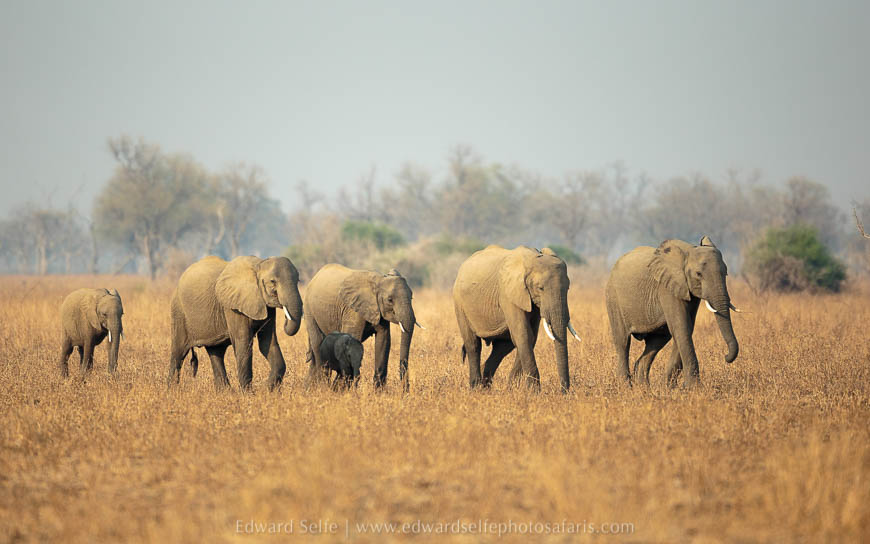
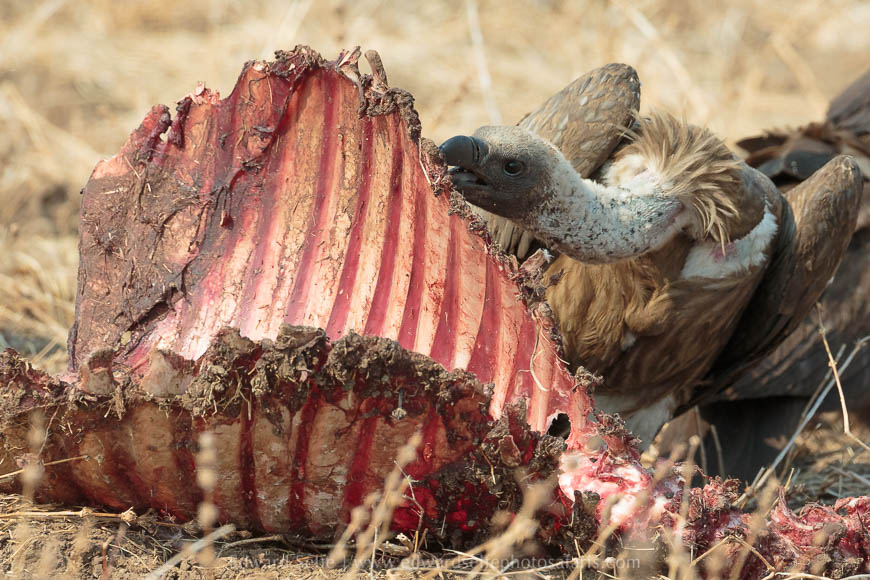
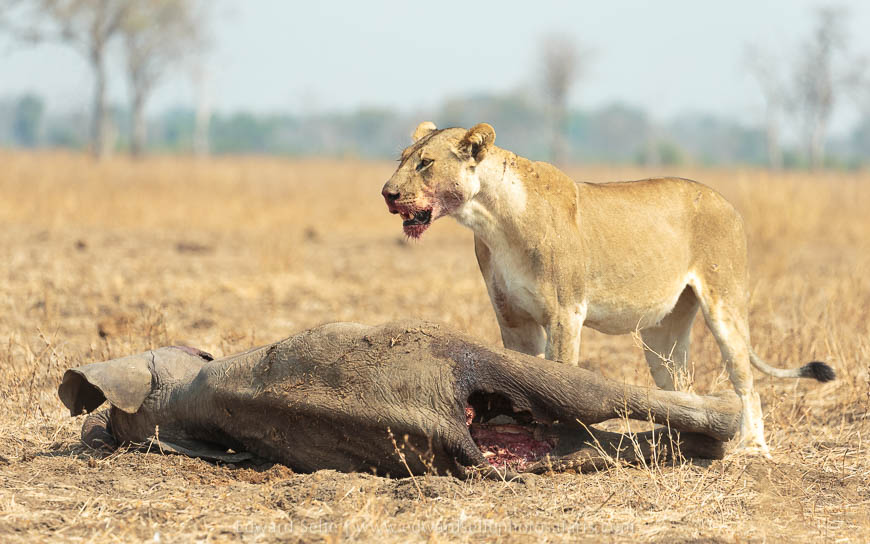
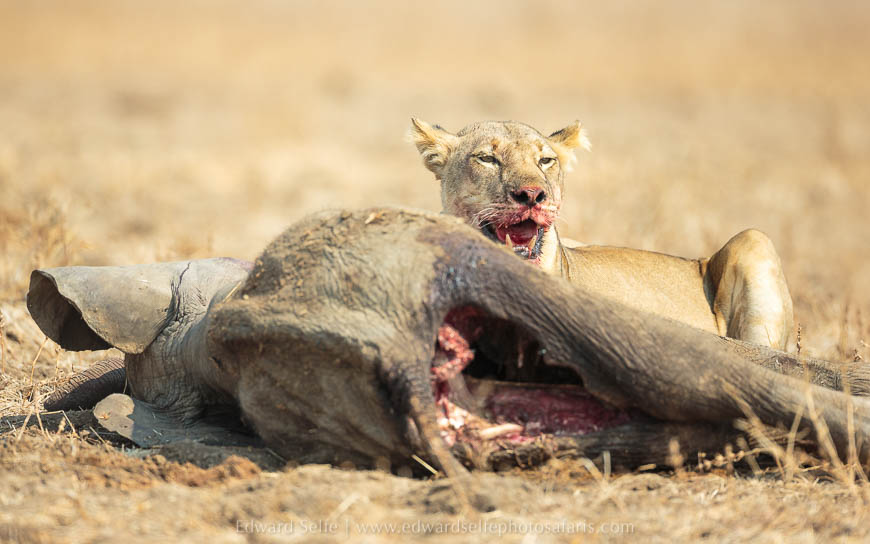
The following day, we decided to head to the inland salt pans. But as is often the case, we were interrupted along the way! Near the elephant carcass from the previous day, I saw the two intruding males running towards the river. I thought perhaps that the Nsefu pride females had ejected them, or perhaps that they had heard a kill on the opposite bank and wanted to return home to claim it….but either way, they might be about to cross the river. I wanted my guests to be there if that was going to happen! Choosing the best route, we arrive just in time to see them….stop and lie down by the riverbank!! The MK pride were on the top of the opposite bank, and the young males seemed content to have seen their own pride and know that they weren’t missing out on a meal. They settled in the shade and we moved on to the salt pans. We found some of the Nsefu pride drinking at the pan but they soon moved off, so we spent time with buffalos, crowned cranes and a few carmine bee-eaters.
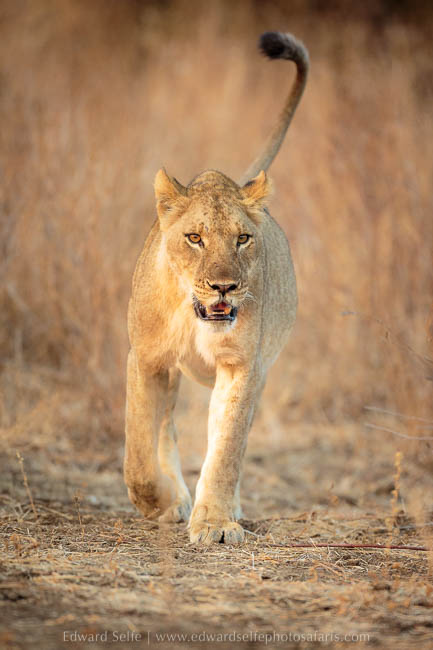
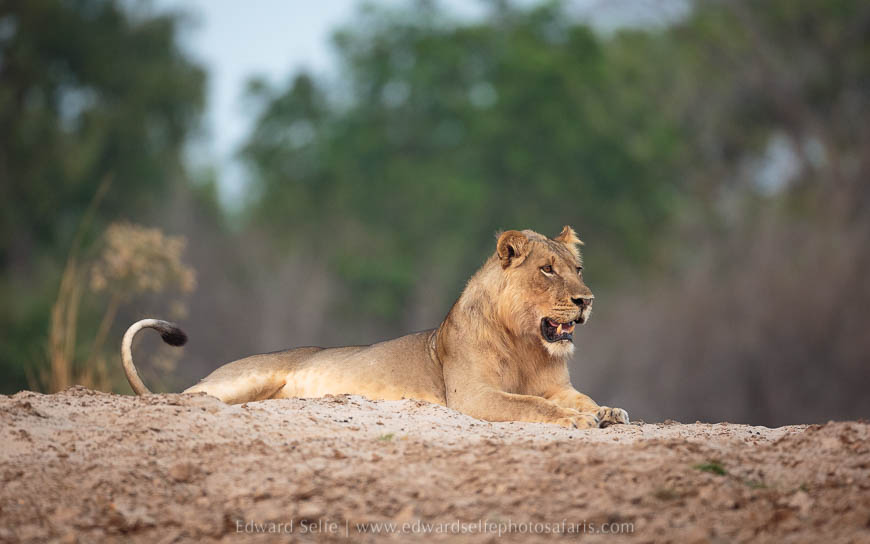
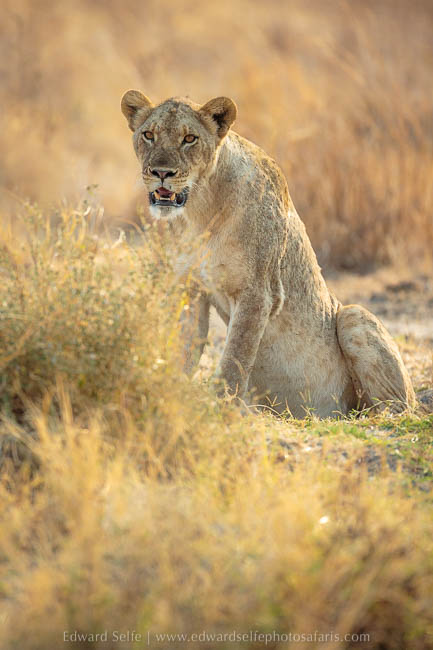
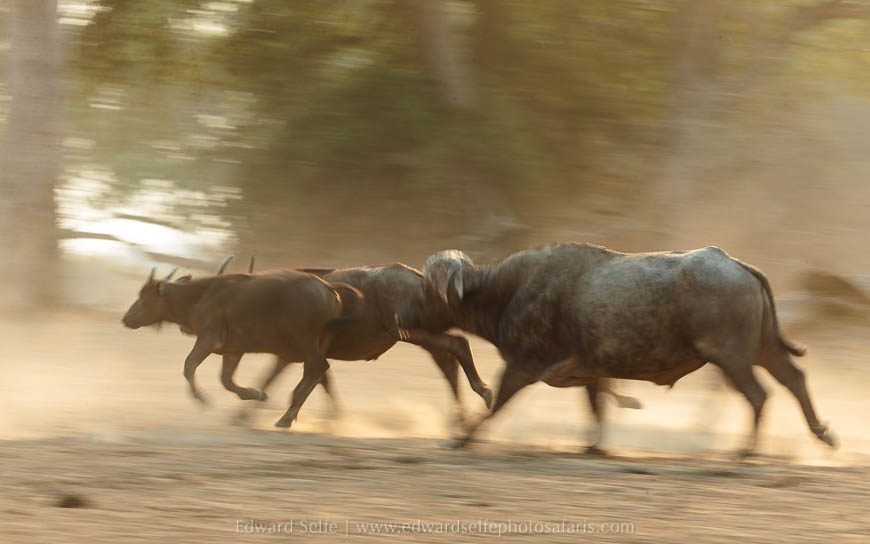

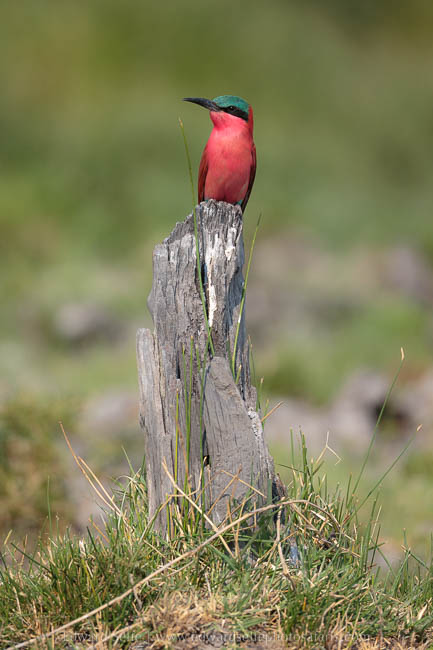
We had one last day of this trip; one last day in the Nsefu Sector. We had already seen everything we could have hoped for and much more, so I thought hard about what to do with our final two outings. Carmine bee-eaters were an option (using Nsefu’s excellent hide), as was time tracking leopards in the riparian vegetation. We had all seen plenty of lions, but there was a hyaena den that I wanted to explore too. I set a vague plan and let the bush decide where we would end up.
As is often the case, this is a pretty good policy. On leaving camp, we took the river side road, weaving through and among elephant herds, spotting colourful bee-eaters hawking from the rich green sausage trees and stopping regularly to take shots of monkeys, antelope and birds. During one of these stops, the loud calls of impalas in alarm could be heard, so we went to explore the area and tracked down a leopard with an impala carcass under a tree. The cat was hot and frustrated by the shouting of nearby impalas, so we stayed to take some photos and then moved on; we knew that little would happen before dusk when she would try to stash the carcass in the tree. If we had nothing else going on, we would return to watch.
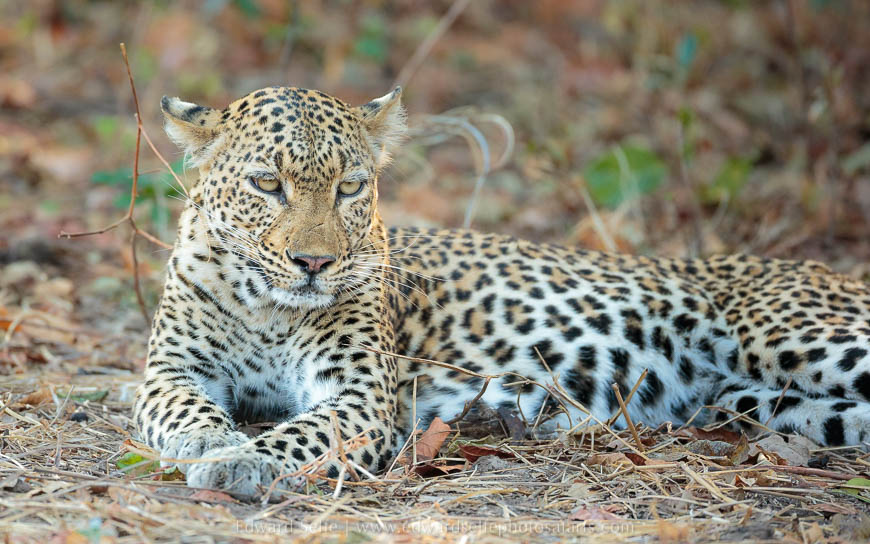
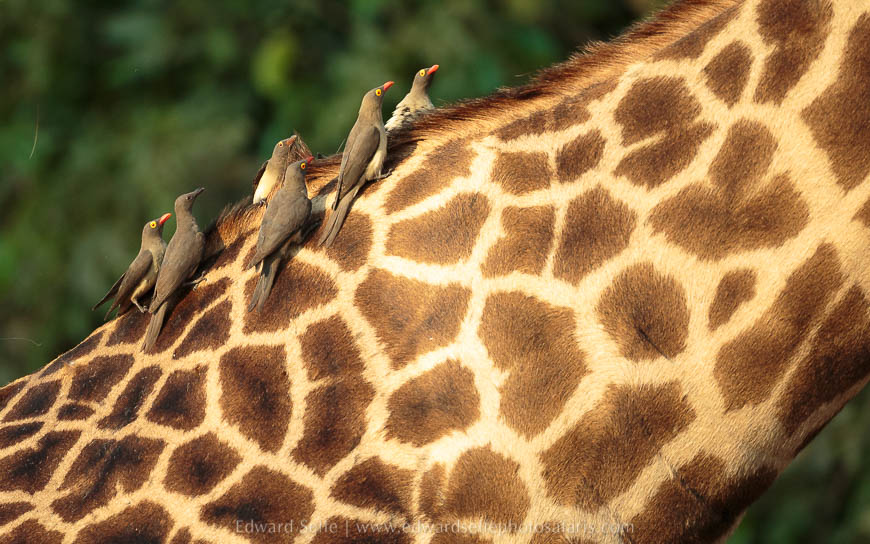
We headed to the Carmine bee-eater hide, a fantastic platform hanging over the edge of the river bank, giving a superb view along the river cliff where the birds are nesting. We spent the last 20 minutes of the best light in the hide, shooting against the light downstream and with the light upstream; it’s a superb dynamic view.
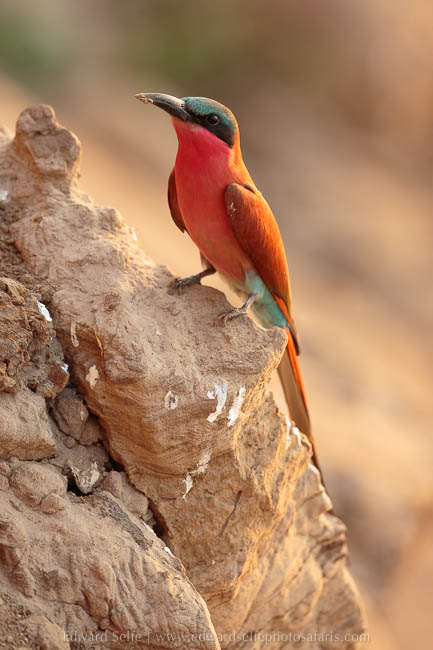
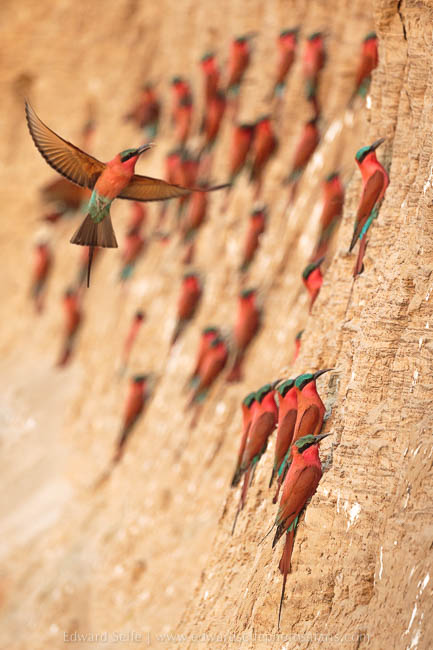
We returned to the leopard and her carcass after dark but found that she had left the impala on the ground and gone for water. We located her at a nearby waterhole but she was obscured for photos. Before reaching camp, we went looking for the two male lions that we had seen in the morning, and came across them licking their paws and cleaning each other’s faces. Returning to camp, a family of porcupines crossed the road and then – momentarily – paused to allow us to get rare photos of three of them together!
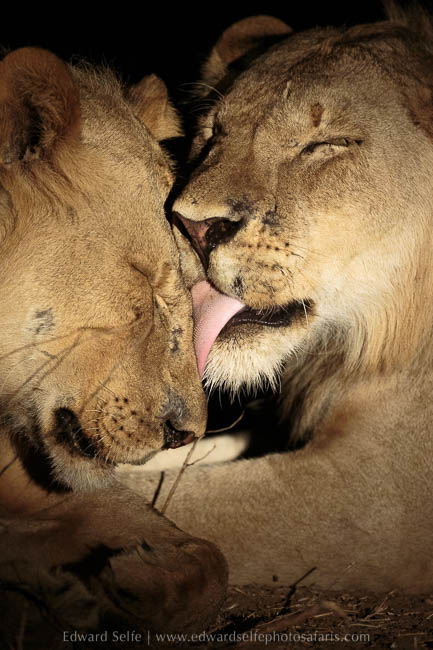
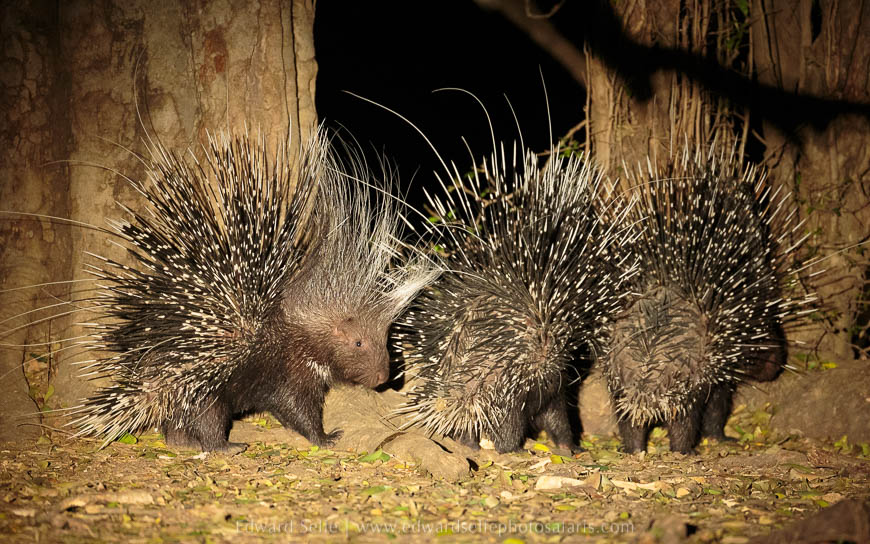
So what would our last morning drive bring us? Having only a vague plan had served us well the previous night (leopard with a kill, two lions and the carmine bee-eaters!) so we set out through the best areas of riverine forest to see what would appear. 3 minutes outside camp, I saw a young baboon cross the road and I commented on how early it was to be down on the ground; it was still dark and we needed a spotlight to see anything. We passed the spot but the baboon had gone behind a tree. I moved on, but immediately baboons started barking and we turned back in the direction that they were looking. A male leopard had just killed the baboon and was carrying it towards the road and towards the thickets. He was shy – the young male in that area has never got used to vehicles – so he dropped it and ran into the bush. We moved back immediately to give him space and hoped that he would return. I could see him peering at us through the leaves, so we moved on not wanting to allow hyaenas to steal his prize! An epic sighting, that most safari goers would give anything for, had been just another highlight in a trip of highlights!
I was dropping my guests at Tena Tena, a camp further south in the Nsefu Sector, so we headed down to some of the incredible elephant-drinking points along Luangwa. The first was quiet with no elephants to be seen, but the second that I chose was just playing host to a herd of 50 that were emerging from the bush. We sat down on the sand and waited for them to come. It was a very special ending to our last morning drive.
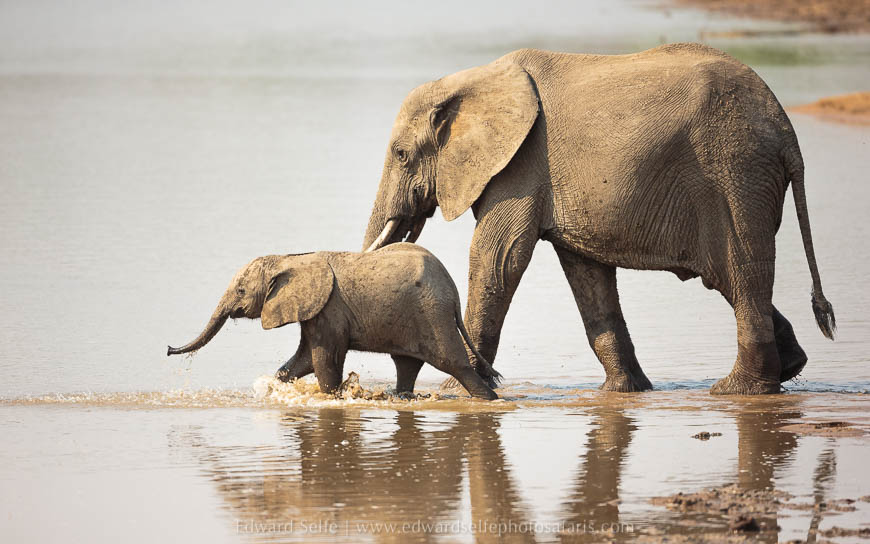
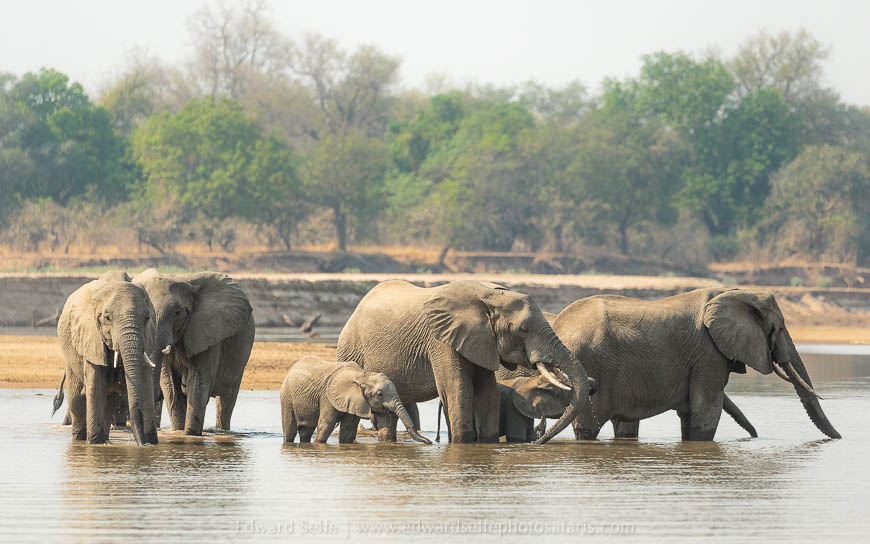
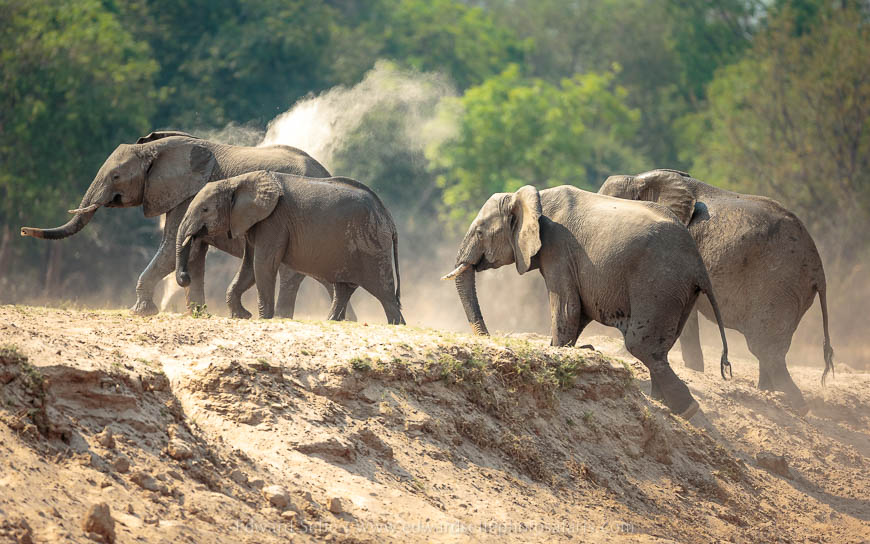
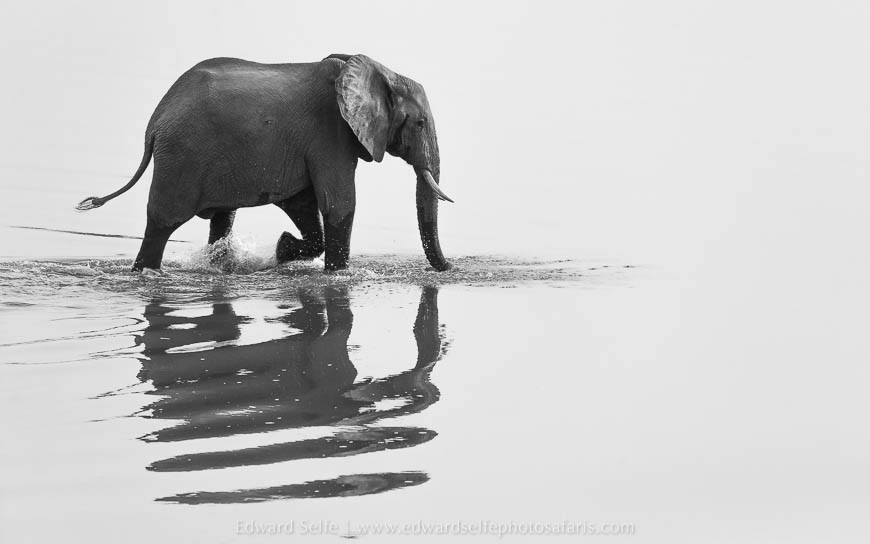
I have lived in Luangwa long enough to know that this was going to be a great trip. An extended safari at a fantastic time of year using the best areas. But it was so rewarding to see how my guests experience of the trip had evolved; at first they had rushed to take images, often creating great photos but, by the end, they were composing carefully, framing thoughtfully and creating sharp, well-exposed images. I also challenged them to introduce blur to their images, shoot against the light, shoot in the dark with a spotlight and even with other vehicles’ spotlights. They rose to all these challenges and have returned with portfolios of images that they can be really proud to show around.


